
jANUARY/ FEBRUARY 2023 FREE ROMP Visit the wishing tree CHOMP Baby-friendly restaurants SHOP Littlebird Toddler CareTracker YOUR GUIDE TO A KID-FRIENDLY CITY R SEATTLESCHILD.COM Winter FUN Do something different! Go tubing Nordic ski Winter picnic? Watch outhouse races Try ice fishing Track animals Dig razor clams INSIDE/ OUT SEATTLE-AREA WINTER CAMPS AND CLASSES ADVERTISINGSPECIALSECTION





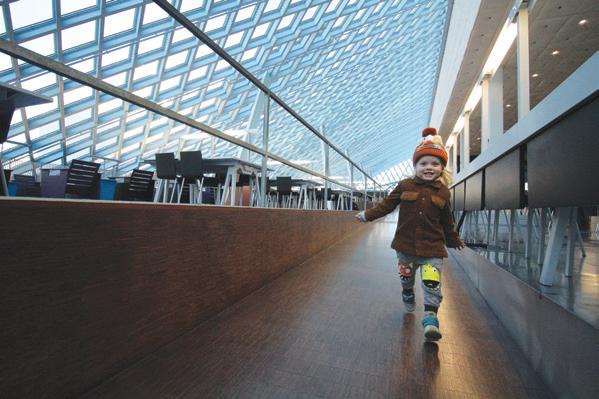

(206) 627-0528 8 Boston Street, Suite 2 Seattle, Washington, 98109 www.glassonlegal.com A family-oriented estate planning, real estate, and business law firm. 2 SEATTLE’S CHILD January/February 2023 >> Contents Seattle’sChild „ Find us online at seattleschild.com Cover photo courtesy of SHUTTERSTOCK January/February 2023 // Issue 497 p.9 p.16 p.28 INSIDE/ OUT SPECIAL ADVERTISING SECTION PUBLISHER’S NOTE 3 WHAT PARENTS ARE TALKING ABOUT 5 DAD NEXT DOOR 7 TOOLBOX 8 ROMP 9 CHOMP 11 SHOP 13 FEATURE: Winter fun 15 ANIMAL TRACKING 15 RAZOR CLAMMING 16 LUGING, SLEDDING AND TUBING 17 NORDIC SKIING 18 WINTER PICNIC 19 OUTHOUSE RACES 20 ICE FISHING .......................... 22
As parents, we do our best to feed, shelter, nurture, educate, civilize, protect and comfort our kids. It’s 24/7 work. And, even if we are surrounded by the best resources and support, it’s likely the hardest (and most rewarding) job we’ll ever have.
But when parents don’t have access to the basics needed for their kids to thrive — food, housing, good healthcare, quality childcare and education, a safe neighborhood — parenting becomes exponentially more difficult.
When those essentials are not provided the destructive effects on not only individual lives but the whole community are far-reaching and long-lasting.
Recently, we posted this question on the Seattle’s Child Facebook page: What are your biggest concerns as parents?
Your answers were as follows:



31 Gun violence / school safety 32 Mental health / anxiety / depression in kids
33 Exorbitant cost and shortage of child care/ lack of quality universal pre-K 34 Drugs, addiction, Fentanyl 35 Rising cost of food / job insecurity

36 Families leaving public school
37 Lack of affordable housing / homelessness

We thank the 180 of you who responded. Your participation served as a call-to-action for us. We know we all share a collective responsibility to support deep change in our systems in order to give struggling families the basics to which they are entitled.
Therefore, as 2023 begins, Seattle’s Child has resolved to make it easier for busy families to take meaningful action to address these concerns. To do so we’re proud to be partnering with local organizations working on behalf of families, including the Children’s Alliance and Grandmothers Against Violence.


As we prepare for the upcoming legislative session in Olympia, Seattle’s Child will share partner reports and provide timely updates and calls-toaction at the local, state and national level.
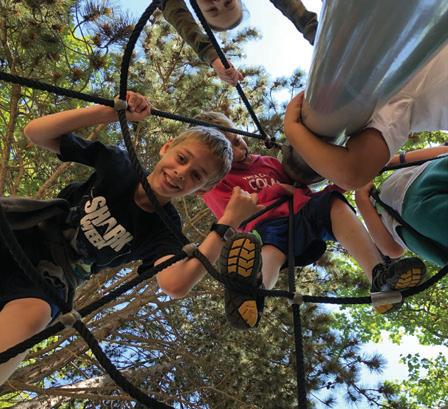

This information and more will be found in the new Take Action section of our website, on our social media and in our weekly newsletter Dispatch. We hope you’ll join us. SC
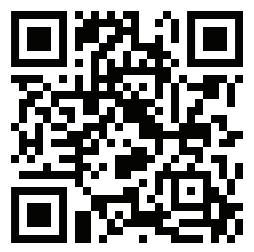
Learn More! Register for a Tour Sign Up for a Visit Day eastsidecatholic.org | Coed, Grades 6 - 12 Unlock Potential Experience Faith Discover Community Foundation Grades 2-8 Middle School Grades 6-9 Morningside Academy 206.709.9500 901 Lenora St, Seattle www.morningsideacademy.org January/February 2023 SEATTLE’S CHILD 3
Note
»Publisher’s
Ann Bergman





















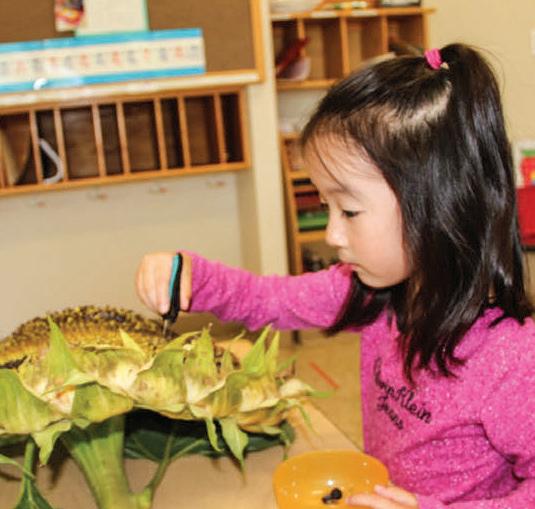



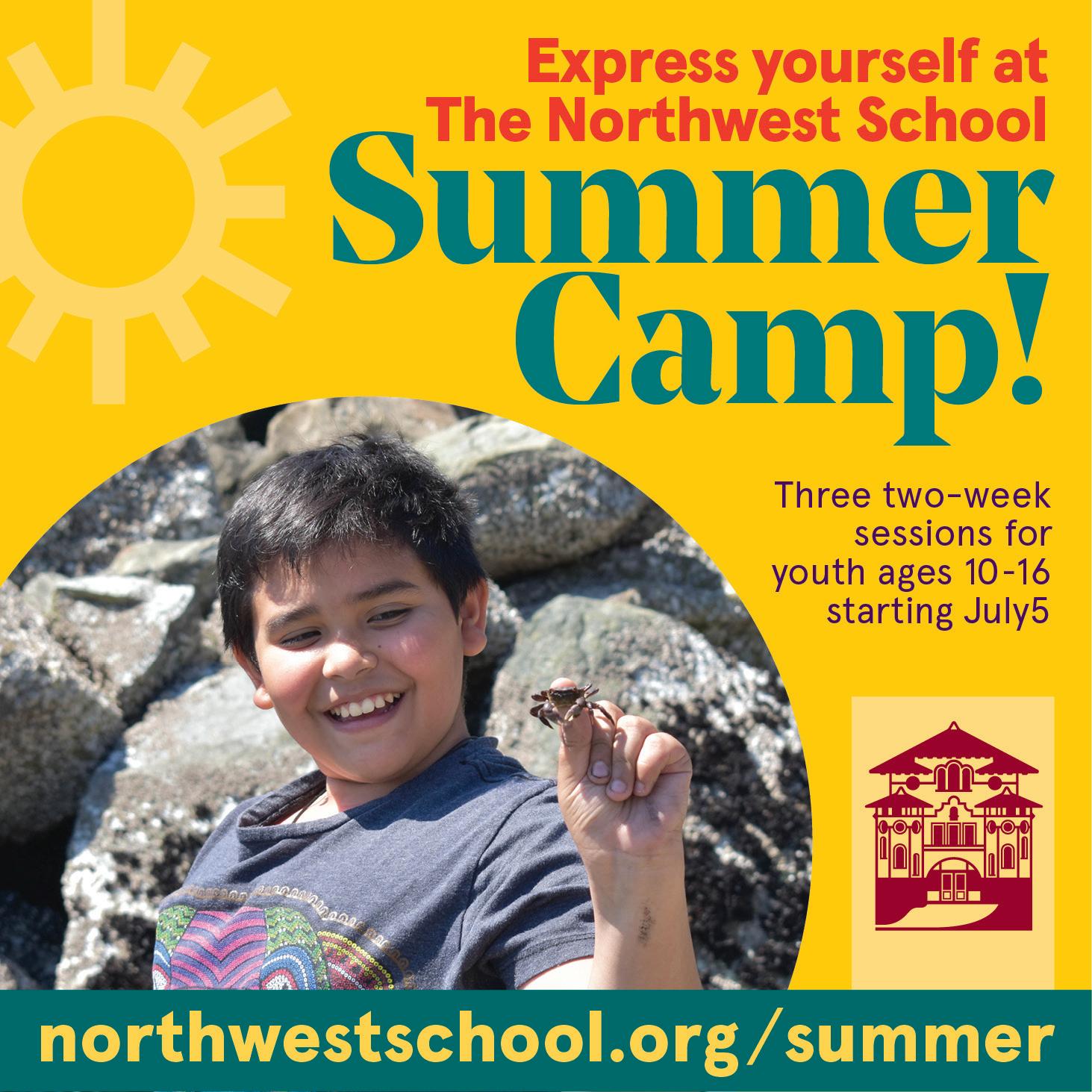
The Sammamish Montessori School In Redmond www.sammamishmontessori.com • 425-883-3271 Call 425-883-3271 for a tour. • Child-centered, joyful atmosphere with strong academic focus • Experienced, Montessori-certified teachers
Preschool, kindergarten, and STEAM Enrichment
Family owned and operated since 1977 • Summer, before & after school programs • Prep Program, (starting ages 2 1/2-3) Now Enrolling Tour Today! C M Y CM MY CY CMY K ai167113929494_Seattle's Child_12-15-22.pdf 1 12/15/22 1:21 PM 4 SEATTLE’S CHILD January/February 2023 ANN BERGMAN Publisher, Founder abergman@seattleschild.com JASMIN THANKACHEN Associate Publisher jasmin@seattleschild.com KATHRYN HOLLOWAY Art Director CHERYL MURFIN Managing Editor cheryl@seattleschild.com JULIE HANSON Website Editor jhanson@seattleschild.com ROSE WILLIAMSON Proofreader JEFF LEE, MD Columnist KEN BEVIS DR. SUSANNA BLOCK LAUREN BRADEN FIONA COHEN NILS DAHLGREN MAYA EWINGS REBECCA MONGRAIN JAMIE MONKKONEN CLAIRE SHERIDAN MARCY STAMPER JASMIN THANKACHEN MARY YGLESIA Contributors ADVERTISING JULANN HILL Senior Account Manager julann@seattleschild.com 206-724-2453 AMBER ELBON Ad Production Manager amber@seattleschild.com Seattle’sChild “Seattle is my town. I know this city inside and out… or so I thought until I had kids.” Seattle’s Child is your guide to getting to know your city all over again. Finding things to do, places to eat, and how to get around — it’s a
new ballgame with kids
tow. We’re interested in how parents make homes in a space-challenged urban environment, how families create
and what parents
Seattle’s Child reflects
Washington families and
of parenting experiences. January/February 2023 // Issue 497 Seattle’s Child has provided useful information to parents since 1979. In addition to our magazine, look for our special themed publications — Everything Family, School and SummerTime — distributed free throughout the Puget Sound area. Seattle’s Child is published every other month. ONLINE seattleschild.com Facebook facebook.com/seattleschild Twitter @SeaChildMag Instagram @seattleschildmag MAIL c/o Postal Plus 1211 E. Denny Way, Seattle, WA 98112 VOICE 206-441-0191 TO ADVERTISE advertise@seattleschild.com MAGAZINE DISTRIBUTION distribution@seattleschild.com STORY IDEAS editor@seattleschild.com CALENDAR SUBMISSIONS calendar@seattleschild.com Deadline is first of the month, one month prior to publication. Include date, time, cost, appropriate ages, address, contact information and description. Seattle’sChild
•
•
whole
in
community,
are really talking about.
real
their broad range
»What Parents Are Talking About
Education, health, development and more
tax
by MAYA EWINGS
I learned plenty about the needs of children and their families from years of working in early learning and family support. But when I became a mother myself, one thing became clear: Families need more affordable child care options. The too-high cost of child care Currently in Tacoma it costs between
$850 and $1,500 per month to send your child to a market rate day care, depending on the age of the child and whether a family qualifies for a subsidy. The costs make it hard for families to survive — and almost impossible to dream of upward mobility.

For a long time, I felt as though I was working just to pay for child care, spending
little time with my son, and still not getting ahead. It turns out, that’s not uncommon. Moms — especially single women raising kids on their own — feel this cycle the hardest. Many stay out of the workforce for six or more years, until their children enroll in elementary school, or struggle to find creative ways to bring in income and remain available to care for their children.
A bottleneck
The lack of access to affordable, quality child care is causing a bottleneck in
January/February 2023 SEATTLE’S CHILD 5
CONTINUED ON NEXT PAGE >
Find more local news for families on seattleschild.com
these stories
seattleschild.com
for finding child care
and create art 1 2
3 In support of a capital gains
An important step forward for families is threatened by a lawsuit
„
Don’t miss
on
Five tips
18 places for kids to paint, sculpt
How to have a great birthday party for a child with autism or sensory challenges
«What Parents Are Talking About


achieving my dreams and securing my family’s future. And that is true for the broader Washington state economy and society as well. Parents keep switching lanes and looking for new routes. The gridlock sidelines potential workers and frustrates employers.
I continue to hold out hope that help is on the way for families like mine — and I am heartened by recent movement in that direction. Last year, legislators in Olympia passed a capital gains tax. It was a good move in itself, because our state has the most upside-down tax code in the country. Our current system means that those with the lowest incomes pay the biggest percentage of their income in state and local taxes, while those with the most pay the least. The capital gains tax was one step toward fixing a great and unfair imbalance.
Capital gains: A win for families

For parents and families, the news is even better: The revenue from the capital gains tax passed in 2022 — about $450 million a year — will provide more subsidized day care spots and affordable options for child care, as well as help fund K-12 public schools through the Education Legacy Fund.

More affordable options for child care won’t just benefit parents. Employers will have access to a bigger and more stable pool of workers. Educators will welcome kindergarten-ready learners with a solid foundation of social, emotional and early learning skills.


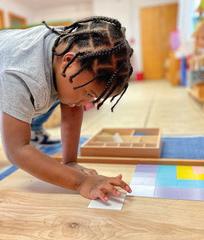
Funding a life-saving resource in ECEAP
Before experiencing the effects of unaffordable child care myself, I served as a family support worker for the Early Childhood Education and Assistance Program
(ECEAP). This state-funded program, which serves families at or below 200% of the poverty level, is an important and even life-saving resource for children and their parents and guardians.
At ECEAP, we support families in myriad ways. To start, I go into the community to make sure eligible families know about our services and, if needed, help them enroll. Once they’re enrolled, I work with them to set goals for their children or help them identify goals for their family, for example, moving to more stable housing. I have helped homeless families find and move to apartments, assisted moms in making plans to continue their own educations, connected dads to food banks and found doctors and dentists for whole families.
Every outcome better
I have seen the difference that ECEAP has made in the lives of dozens of families I’ve worked with. Every single outcome in a child’s life is better when they get a great start at preschool. Graduation rates are higher, as are post-graduation employment rates. Obesity and diabetes rates are lower. Crime rates and teen pregnancy rates are lower.
Better access to early childhood education isn’t just a good idea, it makes sound economic sense for all of us.
Valuing families, providing tools



I am grateful to lawmakers for finally investing in programs like ECEAP with proceeds from the capital gains tax. This decision values families by helping us all get the tools we need to build good lives.
We’re not done yet
State lawmakers are expected to take up the discussion of Washington’s unfair tax system in January. And, on January 26, the Washington State Supreme Court will hear arguments in a lawsuit brought against the capital gains income tax soon after it passed in 2022. Learn more at Invest in Washington Now. SC
Parenting
Sign up to get our free weekly email newsletters. seattleschild.com/subscribe hildren t PEN U ATURD ARY 7 -12:00 PM b o e th education for independence preparing not just r life " Dr. Maria Montessori www.threetree.org 220 SW 160th St, Burien, WA 98166 Register Here! months to 12 years HOUSE JOIN US SATURDAY JANUARY 7 10:00 AM-12:00 PM Learn about Montessori education Meet the teachers Explore the classrooms Montessori is an educat on for ndependence preparing not just for school but for l fe " Dr Maria Montessori www threetree org 220 SW 160th St Burien WA 98166 RegisterHere! Serving children 15 months to 12 years OPEN HOUSE 6 SEATTLE’S CHILD January/February 2023
from a local perspective.
CONTINUED
» Dad Next Door

A little encouragement from across the fence
by JEFF LEE, MD
It’s not about the bathrooms
Lately, a growing culture war has been brewing around the issue of gender identity. As with almost everything these days, the borders of the conflict seem to be drawn along tribal political lines. The Twitter skirmishes have expanded to battlegrounds of bathroom signage, school sports and J.K. Rowling, and they’re reverberating from editorial pages to conspiracy chat rooms all across the country. The hyperbole is pretty hot and heavy out there.
As destructive and disheartening as that public debate has been, I’ll admit that I’ve been observing it with a bit of remove. For me, the questions around gender identity are playing out on a more intimate level, much closer to home. For sure, the political backdrop can’t be ignored — but up close, these questions seem both more important and less abstract.
Although I don’t think there really is such a thing, our 11-year-old Pippa has never been what most people think of as a “typical” girl. She’s always been interested in dragons more than princesses, tree-climbing more than tea parties, and martial arts more than ballet. She’s always been physical, and loud, and rough around the edges. Sometimes, she says or does things that at first seem odd or difficult to explain, and we have to remind ourselves that if she were a boy we might not be so concerned.
As I’ve watched her grow, her nonconformity has forced me to acknowledge and address some of my oldest, deepest biases in ways that nothing else could. I was a child of the 60’s and 70’s, when the standard insult among boys was a homophobic slur, and when bullying anyone who dared to be different was a form of daily entertainment. It’s embarrassing, now, to remember how ignorant and cruel we all were when I was her age. It’s taken a lifetime to scrub away the residue of that upbringing, and I have Pippa to thank for removing several layers. She’s made me a better, more conscious person — not through some abstract ethical argument, but through the unmistakable truth of who she is.
Over the last year or two, she had be-
come a little more moody and secretive. We chalked it up to normal pre-adolescent angst, but it still worried us. Then, a few months ago, she declared that she wanted to cut her hair short. After shearing off a couple dozen inches of her beautiful, thick hair, she seemed noticeably lighter. Some of the sullenness lifted away, and her sense of humor returned. We took her clothes shopping, and she picked out some things she’d never had the chance to wear before, including some camouflage pants and a clip-on bow tie. She’s clearly delighted with all of this, and when you look at her, it’s hard to argue with her choices: it all suits her. She looks like herself.
Her grandparents were befuddled by all of this. They vacillated from game wokeness to frank cluelessness, struggling to make sense of it all. Is she trans, they asked? Is she gay? Will she suffer in her life because she’s “different?” What does this all mean?
In the end, the answers they needed came in the undeniable form of Pippa herself. Spending time with her, we could all sense her relief and delight at being free to explore who she is in this world. How could we feel anything but happiness for that? What better gift could we give to someone her age?
For the moment, Pippa identifies as female, and she hasn’t landed on any particular sexual orientation. There’s plenty of time for all of that. I’m sure she’ll figure it out, and the answers may well change over time. I’m excited for her. How lucky she is to live in this time and place, where options really do exist, and where labels have so much less power to constrain.
As parents, we get used to deciding for our children. We decide what to feed them, how to clothe them, where to school them. After a while, it becomes second nature. That’s why it’s such an unexpected pleasure to let her decide, for once. Finally, we get to be curious instead. We get to sit back and watch Pippa discover who she is — and in the process, we get to discover it for ourselves.
OUR COLUMNIST Jeff Lee is learning to tie a bow tie in Seattle, WA
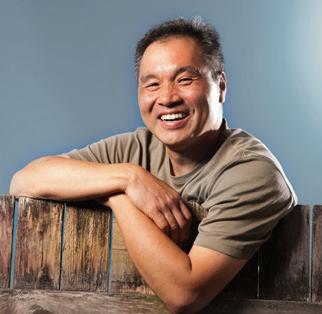

Find support, connection, and resources for your family!

PEPS offers peer-support programs for expectant parents, parents of newborns, infants, or adolescents and teens, plus affinity groups. Families can connect on weekdays and weeknights in virtual, in-person, and hybrid groups.


Join a PEPS Group today!

January/February 2023 SEATTLE’S CHILD 7
Flexible Pricing program fees and Financial Assistance available for all groups.
„ Read all of Jeff Lee’s columns on seattleschild.com
ABOUT
»ToolBox
What every parent needs to have on hand
Beating bronchiolitis
by DR. SUSANNA BLOCK
Tis the season for coughing and wheezing, runny noses and chills. Tending to kids with respiratory illness symptoms is just a (less glamorous) part of parenting. But between COVID, parainfluenza, RSV and a high number of pediatric hospitalizations for respiratory illnesses this year, it can come with an extra dose of worry. Most cases resolve themselves with care, but children do need to be watched for more concerning symptoms. With an infant or young child, after three to five days a respiratory infection can turn into “bronchiolitis,” a lower respiratory tract infection that mostly affects children under 2 years old.
Let’s talk about bronchiolitis, caring for your little one, when to call your pediatrician, and what severe symptoms to watch for.
What is bronchiolitis?
Bronchiolitis is a viral infection that affects tubes in the lungs called the “bronchioles.” When infected, they get swollen and full of mucus. That makes it hard to breathe.
Bronchiolitis is the leading cause of hospitalization in infants and young children. RSV (respiratory syncytial virus) is the most common cause, but it’s also caused by many other respiratory viruses including influenza and parainfluenza, rhinovirus (which you likely think of as the common cold), and COVID infections.
What are symptoms of bronchiolitis?
Bronchiolitis usually develops following one to three days of common virus symptoms including stuffy or runny nose, cough, fever higher than 100.4 ºF, decreased appetite or difficulty eating. The symptoms can progress to more severe coughing, wheezing and congestion, and sometimes difficulty breathing. Keep in mind that symptoms can get worse before they get better and they can last a full two weeks.
Many children with bronchiolitis do not need to see a doctor. If you’re concerned about your child’s symptoms from a respiratory illness, get in touch with your pediatrician early on to help monitor your child’s breathing and follow up over the course of the illness.

Recently, area hospitals have been seeing limited pediatric bed space because of bronchiolitis and respiratory illnesses including RSV and flu. Contact your pediatrician first if you have questions, unless it’s a life-threatening emergency or symptoms are severely
affecting your baby or child’s ability to drink, eat and breathe. Watch for these signs or symptoms of worsening illness:
3If you see increased rate of breathing, worsening chest retractions, nasal flaring, a decreased ability to feed or decreased urine output, contact your provider or call the nurse consulting line.

3A child who is grunting, appears to be tiring, stops breathing, or has cyanosis (blue-tinged skin) needs urgent medical attention.
How is bronchiolitis treated?
There is no cure for bronchiolitis, so treatment is aimed at controlling symptoms like difficulty breathing and fever. Antibiotics, cough medicines, decongestants, and sedatives are not recommended. For home treatment:
3Reduce the fever: Acetaminophen (for children at all ages) and ibuprofen (for children six months and older) can be given to help reduce a fever. Aspirin should not be given to any child.
3Encourage fluids: Your child might not be drinking or eating normally. Offer fluids frequently and watch for signs of dehydration like a child is refusing fluids or has fewer wet diapers than normal.
3Deal with the snot: Nasal suction is key even if it sounds unpleasant. Infants and toddlers can be treated with nasal saline drops to loosen phlegm, and then use a nasal aspirator to remove nasal secretions. It’s called a ‘snot sucker’ and it works! An older child can use saline nose spray and blow
their nose to remove phlegm. How do I avoid bronchiolitis?
All of these viruses are contagious. Thanks (?!) to the pandemic, we’ve gotten very familiar with the simple daily measures we can take to avoid viruses; let’s keep it up.
3Hand washing: RSV and other viruses can last on hands and surfaces for several hours. Keep on the frequent handwashing for kids and adults, and wash hands or use an alcohol-based hand sanitizer before handling an infant.
3Stay home: Many of these illness from RSV to COVID to even some allergies have common symptoms. It might not be clear what infection your child has, so keep your kids at home if they are experiencing symptoms.
3Get those flu shots and COVID vaccines/boosters: Anyone 6 months and older is eligible for the flu vaccine. The updated Pfizer-BioNTech COVID booster is recommended for anyone 5 years or older who received an initial vaccination or booster shot at least two months ago. Even if you or your child has had COVID, it’s important to still get vaccinated as natural immunity declines over time.
ABOUT OUR COLUMNIST Dr. Susanna Block, MD, MPH, is a pediatrician with Kaiser Permanente in Seattle and lives with her family in Queen Anne.

8 SEATTLE’S CHILD January/February 2023
BRONCHIOLITIS: COURTESY OF SHUTTERSTOCK
The Wishing Tree
Seattle’s wishing tree is an extraordinary sight to see. Located in North Capitol Hill, this special tree bears hundreds, if not thousands, of hand-written wishes on laminated cards strung with colorful ribbons. Some ask for help, good health and healing, while others are scrawled with kind words and good thoughts. The wishing tree is an established landmark cared for by a neighborhood resident. Take a card, make a wish, and leave the card in the golden jar. Within a week’s time your wish will be on the tree and may have even come true. Find it at the intersection of 21st Avenue E and E Galer Street. —Jasmin Thankachen
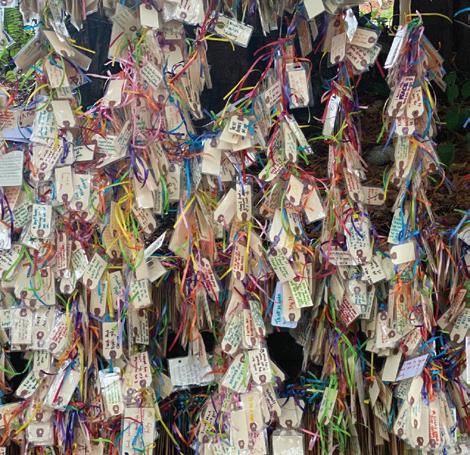
»Romp
Things to do with kids
Libraries worth a trip
A public library is a world of exploration for a book lover. But here in the Puget Sound region, local library branches are also bustling activity centers, art galleries and, in a few cases, architectural wonders worth a visit with kids for that aspect alone.

At the same time, they also offer a surprisingly wide range of services, classes, events, craft
sessions, homework help and other activities – for free. And they act as anchors for the communities where they are located, places that not only showcase books and other media, but foster local art, culture and connection.
“Each of our locations is an essential part of the neighborhood it serves, and the design, collection and art of our libraries represents its communities,” says
Visiting all 57 libraries in the Seattle Public Library and King County Public Library systems would be quite a feat, but we put these six at the top of our “don’t miss” list.
First up, the Mothership!
Seattle Central Library is the largest library in Washington. Located in the heart of bustling downtown Seattle, the towering 11-story, glass and steel building
Spots for winter high tea
Queen Mary Tea Room in Seattle
America’s oldest independent tea room, the Queen Mary Tea Room’s children’s afternoon tea is perfect for kids 10 and under — they’ll nibble on purple cotton candy, royal chocolate fudge tea cake and Queen mum’s shortbread.
Graham’s Royal Tea in Bothell
Graham’s Royal Tea service includes tea, a tower of desserts and delicious sandwiches. Dine in or take a box to go and enjoy a high tea in the comfort of your home. Graham’s hot chocolate and cider fit in those teacups, too.
Paisley Parlour in Issaquah
Modern and chic Paisley Parlour’s high tea service accommodates small or large parties or appetites. Sugar cookies and pink lemonade are a kid favorite here. Take your high tea in or to go.
M/V Lotus in Seattle
All organic afternoon tea served on a boat? We’re in! Sunday tea on the M/V Lotus near MOHAI is served on the covered boat deck or in the Pilot House. Wear layers and a hat. This crew is all about hats — fancy, silly or fun.
The Lodge at St. Edward Park in Kenmore
Afternoon tea at The Lodge at St. Edward Park includes a variety of foods fit for kids with adventurous palates.
A post-tea walk or playground session in adjacent St. Edward State Park rounds out a wonderful afternoon.
—Jasmin
Thankachen
January/February 2023 SEATTLE’S CHILD 9
Elisa Murray, digital communications strategist at The Seattle Public Library.
„ Subscribe to the Romp newsletter seattleschild.com/newsletter CONTINUED ON NEXT PAGE >
From wide-ranging amenities to amazing architecture these public libraries offer something extra
by KATHRYN MUELLER
LIBRARY: COURTESY OF KATHRYN MUELLER WISHING TREE: COURTESY OF JASMIN THANKACHEN 5 things to do
Exploring all the floors at Seattle Central Library.
3 2 1 4 5
Escape from Seattle!
Olympia: Take on the state capitol

It’s January and the state legislature is back in session. What better time to visit the city that governs the Evergreen State? Less than an hour and a half away in good traffic, Olympia is where you will find the state capitol building with its ornate marble rotunda and regal campus. Opt for a morning guided tour so the kids can learn more about these buildings and their architectural history and influence.
Wagner’s European Bakery & Cafe has been a popular lunch spot for all ages for several decades and is located just off campus. A stroll around all or part of the 2-mile Capitol Lake path, stopping at the lake’s interpretive center and playground along the way, is a great way to digest. From there, head to the popular Hands on Children’s Museum to play the rest of the afternoon away. With more than 150 exhibits and a space for outdoor play, children will have plenty of opportunity to explore and use their imaginations. Finally, take a guided tour with any of the docents from the Puget Sound Estuarium. From beach to bird walks, these knowledgeable experts will share a wealth of information about Puget Sound, its waterways and the marine ecosystem.
«Romp
CONTINUED
is awe-inspiring. In fact, its architecture, including the unique checkering of its 10,000 (yes, 10,000!) windows, is a reason in itself to visit the library. Explore the whole building — young kids will be fascinated by the conveyor-belt book return, the all-red floor (painted in 13 shades of red and pink) and the giant octopus mural lurking by bookcases.

The main library’s expansive children’s section includes not only books, but a craft area, tactile toys, a big blue ox jumping from the walls, a vibrant red peacock perched on a branch and a shimmery dragon slumbering atop a bookshelf.
Best neighborhood library Richmond Beach Library in Shoreline is part of the King County Library System. The 5,250-square-foot library has an open floor plan and tall wood-beamed ceilings. The children’s section is small, but it is a wonderful, cozy place to spend the day with oceanthemed artwork on the walls, small tables and computers geared toward children (the panda headphones were a hit for my kiddos). Outside, Richmond Beach Community Park is only steps away, featuring a playground and views of Puget Sound. From there, head a few blocks south to Richmond Beach Saltwater Park to read books on driftwood, play in the sand on sunny days and
watch trains speed by from the bridge above the tracks.
A library to boost their love of plants
Want to foster your child’s love of nature? Elizabeth C. Miller Library is the perfect place to visit. Located at the Center for Urban Horticulture near the University of Washington, the library is home to more than 15,000 books and 400 magazine titles — the most extensive horticulture collection in the Pacific Northwest.
In the back corner of the small but comfortable library is a children’s section replete with toys, puppets and sensory books in little baskets in a bright alcove. Learn alongside your kids in subjects like gardening, botany and more. Then take what you learn outside: Surrounding the library is a short trail system to wander.
One shipshape library
Seafarers will be enthralled by the Beacon Hill Library, home to Miles Pepper’s boat sculpture, the “Dream Ship.” The sculpture appears to move in the wind and flies high above the branch. This library is bright and welcoming and the whole building is reminiscent of a wooden ship. Another thing we love: the words of 11 Beacon Hill-area writers have been immortalized on the building. Can you spy haikus on the quarry rocks outside?
Over the river
Imagine looking out the window of a library and seeing water run beneath
the floor on which you stand. That’s the experience at the Renton Public Library, part of the King County Library System. The building forms an 80-foot bridge over the Cedar River, sitting atop 12 concrete columns. The visit here is all about cuddling up with a book next to one of the floor-to-ceiling windows, looking down every now and then to watch the salmon run by in season or ducks and other aspects of nature on the river. Not to mention the library offers some of the best seats in the house on the day of the Renton Ducky Derby in July, when hundreds of rubber ducks bob down the Cedar.
Swimmingly busy and sustainable in Ballard
The Ballard Branch is one of the busiest branches in Seattle. This 15,000-square-foot building includes a nautical-themed green rooftop. The library has a large children’s section, games and a bright, open floor plan. You can’t miss the large green wall near the front door, but there is something about it that’s unique. Gaze between slats in the wall and a periscope will give you a peek at the greenery on the roof. Interested in maritime? Ballard has a whole section dedicated to fish.
Library services and most programs are free, but you’ll need a library card to check out books. Go to any library to apply for a card or go to the Seattle Public Library or King County Library websites to apply online. SC
10 SEATTLE’S CHILD January/February 2023
LIBRARY: COURTESY OF THE SEATTLE PUBLIC LIBRARY OLYMPIA: COURTESY OF EXPERIENCE OLYMPIA & BEYOND
The red floor at the Seattle Central Library
Cheap eats Lect’s Soup Stop
Nothing beats the cold weather like a bowl of hot soup. And no place does soup better than Lect’s Soup Stop, located at 5327 Denver Avenue in South Seattle. At Lect’s, the list of delicious and filling soups changes daily. What doesn’t change is the cost – each bowl is less than $10. Are the words soup and sammy inseparable in your family? No problem, the sandwich menu here is lengthy and most are big enough to share. 3lectssoupstop.com —Seattle’s Child staff
»Chomp
Eating with kids
by JAMIE MONKKONEN
Going to a restaurant to enjoy a made-for-you meal may sound like a dream to some new parents — but it can also feel overwhelming. I know. I am currently one of those parents.
Where do you go to find delicious fare, a little ambience and a level of baby-friendliness that means you needn’t stress if your colicky baby erupts mid-meal? My newborn daughter and I went on a scouting mission around Se-

attle and the Eastside to find out. Here are our picks for eateries with excellent accommodations for even the fussiest babies.

Casual Breakfast
Portage Bay Cafe South Lake Union
Portage Bay Cafe is well known for its kid-friendliness and

New in Town ?ál?al Café
There’s a new place in town to introduce your family to the traditional foods, flavors, artistry and sounds of North America’s Indigenous people. Located in the heart of Pioneer Square, ?ál?al Café by Chief Seattle Club (CSC) opened in late November. This cafe seeks to reclaim and reintroduce traditional Indigenous foods in a modern setting, according to the Chief Seattle Club website. The cafe includes a full espresso bar and offers Indigenous cuisine created from ingredients predating the colonial takeover of North America — Great Plains bison, the Three Sisters of Indigenous cooking (squash, maize and climbing beans), Northwest salmon, wild rice from the Red Lake Nation in Minnesota, Dakóta berry sauce and more. Indigenous music provides the background to this welcoming space, where live-edge Spruce tables are surrounded by seasonally changing art from Indigenous artists.
—Seattle’s Child staff
January/February 2023 SEATTLE’S CHILD 11
CONTINUED ON NEXT PAGE >
baby? Take
A new mom and colicky baby explore their dine-out options
New
a seat!
RESTAURANT: COURTESY OF JAMIE MONKKONEN CAFE: COURTESY OF ?ÁL?AL CAFÉ „
seattleschild.com
Author Jamie Monkkonen and her daughter tackle fish and chips (and onion rings!) at Ghostfish.
More on feeding your
family
on
«Chomp
CONTINUED
excellent brunch fare. With its relaxed vibe, it’s a perfect first outing for tired parents in need of a little pampering. As a new mom to a colicky baby, I appreciated that the staff was understanding and the overall noise level provided excellent white noise and a little cushion when my baby started fussing. They cater to food allergies, you can bring strollers or car seats to the table, there are changing tables in bathrooms and the staff is happy to accommodate children. The only trick for this location is parking. Take advantage of street parking on the weekend, or visit one of the local garages. We also recommend the Ballard location.
DERU Market
Kirkland
It’s cozy. The food is delicious with gluten-free, vegetarian and vegan options. And most importantly, they
love babies at this Eastside eatery. And they’ve been known to treat new parents like the special people they are. Not to mention that DERU cake slices are often the same size as newborns. Plenty of people have taken photos of a piece with their baby!
Casual Lunch
Ghostfish Brewing SoDo
With a super-relaxed atmosphere and tasty pub food, this is an excellent lunch or early dinner destination for new parents. We love the beer tasting flights and anyone avoiding alcohol will surely want a second glass of the non-alcoholic GhostFizz, hopped seltzer that tastes a lot like beer! I recommend picking lunch or off-peak times so there is plenty of room to maneuver and care for your little one. High chairs and booster seats are available and free street parking is easy at offpeak times. I’ve never needed to go more than a couple of
blocks. All the pub-style mains are excellent, but don’t skip the super crispy onion rings and churros even as the healthier fare, like the tasty chili and veggie pasta, call your name.
Agua Verde University District waterfront
An old Seattle favorite, Agua Verde offers a fresh take on Mexican cuisine that we call “Northwest-Mex” in our house. The breakfast burritos and salsa bar are my favorites. Have friends or family visiting the new baby? We love bringing our guests here to watch the boats go by and marvel at the houseboats.
A parking lot is located across the street and there’s metered street parking in front. Agua Verde does not have changing tables in the restrooms, so we changed our little one before arriving and in the car before we left. While they recommend visiting at a less busy time to accommodate strollers, they assured me that they will work with you to meet your needs anytime you visit.
Razzi’s Greenwood
Razzi’s is a relaxed Italian restaurant with specialty pizzas and dietary-friendly paninis, salads, pastas and other options. They offer vegan, gluten-free and dairy-free substitutions in many of their dishes and have cross-contact protocols for the most sensitive eaters. True to Italian culture, they are always welcoming to families and have a little play area for toddlers. At this kid-friendly location you’ll find a changing station in the bathroom and stroller and car seats come to the table. There is plenty of room, especially at off-peak times.
A few parking spots are out back, there is some street parking, and a paid lot is less than a block away. My favorite items on the menu are the Gasping Goat and Prosciutto and Spuds pizzas.
Serious Pie Totem Lake Village
True to its name, Serious Pie takes their pizzas seriously. The location at Totem Lake Village is my pick for baby-friendly pizza on the East Side. There is indoor and outdoor seating, and you have Salt and Straw right next door for ice cream afterward. The parking garage on the east side of the village is very close, there is a changing table in the restrooms, and high chairs for older babies. Call ahead or visit at a less busy time for the best experience.
Dinner Kisaku
Tangletown
Gifted children exhibit these characteristics every day. Even so, many gifted students, especially children of color, remain overlooked in class. Not so at Seattle Country Day School. We offer our students an environment where they can ask questions, create, and grow intellectually and emotionally. See if SCDS is right for your child. Reach out today to admissions@seattlecountryday.org.
Seattle Country Day School
For gifted children, K–8

Rooted in inquiry. Dedicated to equity. seattlecountryday.org/admissions
If you were avoiding sushi for the duration of a pregnancy, then run (don’t walk) to this Seattle sushi favorite! Tucked into the quaint micro-neighborhood known as Tangletown in Wallingford, they are very welcoming to babies, strollers and children of all ages. They love having children and babies here. There’s a changing table in the women’s bathroom. Pro Tip: Make a reservation ahead of time so they are ready with stroller space or a high chair.
Ivar’s Salmon House
Northlake
This Seattle classic is extra fun if you want to wow visitors (or yourself) with the waterfront. The Northlake location is well known for catering to families and having ample space to maneuver. I recommend Ivar’s Famous White Clam Chowder and alder-smoked salmon. Parking is nearby along Northlake Way, and there is room for strollers and car seats and a diaper-changing station by the bathrooms. SC
Logical + Imaginative + Intense + Verbal + Observant + Hands-on
12 SEATTLE’S CHILD January/February 2023
by
The process of adoption can be challenging, time consuming, emotionally draining and expensive. Bainbridge Island resident, entrepreneur and adoptive parent Erin Quick knows that from personal

Number one is keeping her physically safe — safe from sexual assault, gun violence, road rage, abuse from a partner, etc… Next would be drugs. What’s out there today is way more potent and dangerous than when I was a kid.
experience. She also knows that it doesn’t have to be that way.
A self-matching platform
That’s why in 2020 Quick, along with Justin Friberg, a Seattle-area entrepreneur, started
building PairTree — an online self-matching platform that connects families hoping to adopt a child with expectant mothers who want their baby to be adopted.
“We basically built Bumble but for adoption,” says Quick.
Quick has drawn on her more than 20 years of experience in global brand marketing and her first-hand knowledge of adoption

Book Review Who Will Make the Pancakes?
Award-winning Seattle cartoonist and author Megan Kelso worked on her newest book Who Will Make the Pancakes: Five Stories for nearly 15 years. Threaded through with themes of motherhood, family and love, it is a delight for all readers, whether they’ve parented or not.

Although much of Kelso’s previous work was pulled from her personal experience, the stories in this new collection are fictional. Only one — “Korin Voss” — has a minor connection to Kelso’s life. It is based loosely on the author’s grandmother in the 1940s.
Some readers may recognize the protagonist in “Watergate Sue,” returned here from Kelso’s New York Magazine series. Sue is a mother whose fixation helps her avoid her feelings about pregnancy. In a unique twist, the stories here are illustrated in different styles, each distinct from the others. Thus, they stand alone even as they work together to tell a bigger story of familial love.
The title? It came from something Kelso heard on the radio.
“Someone has to be at the center of the family and hold it all together,” says Kelso. “It was said in passing but it stuck with me.”
—By Rebecca Mongrain
January/February 2023 SEATTLE’S CHILD 13
Q&A
Cristina Valdes Concert pianist and mom to an 11-year-old daughter in Seattle.
„ More shopping local on seattleschild.com
What are your top areas of concern as a parent today?
CONTINUED
PAGE
APP: COURTESY OF PAIRTREE
»Shop Lively + locally made PairTree: Adoption connections
ON NEXT
>
Bainbridge Island mom develops online platform for adopting and birth parents
REBECCA MONGRAIN
Erin Quick, co-founder of PairTree, with her children.
Things we love Littlebird Toddler CareTracker
connects parents to childhood milestones, health markers and memories they might otherwise miss when they can’t be with their children.
by CHERYL MURFIN
Yakima-based innovator and mother of two Monica Plath didn’t pull the idea for the Littlebird Toddler CareTracker from thin air. She pulled it from experience.
The seed for Littlebird was sown the day two other technologies (Plath’s Ring home security camera and a baby monitor) alerted her to the fact that her young son had been left alone inside her home by his sitter.
Her child was unharmed, but “It was just that awful pit feeling in your stomach,” Plath says of the event. Through the incident, Plath recognized a gaping hole in the fabric of information wrapped around her life.
“I realized everything in my life is connected. I’m connected to my house (Ring). I’m connected to his nursery (monitor). I’m connected to my dog (with walker apps like Rover and Wag). I’m connected to my friends and family,” says Plath. “But, for some reason, there’s this huge gap of information about my little person, this one who is my heart outside my body.
“I thought, ‘How is it that we are not connected during these most formative years?’ It just clicked.”
Littlebird, a wearable toddler tracker
«Adoption
to create a platform aimed at helping families navigate their own adoption process. The PairTree digital adoption platform increases and speeds up connection opportunities between adopting families and expectant mothers. The company also provides a comprehensive, end-to-end adoption experience, from home study approval to matching birth and adoptive parents to completing the state’s legal process of adoption. The platform tailors that three-step process to each adult and child involved, providing guidance to both adoptive families and expectant moms.
A company drawn from personal experience
Quick knows well the financial and emotional toll adoption can take on a family. She and her husband always considered adoption as a potential part of their family journey, but
and tracking app, lets parents know exactly where their kids are at all times, who they are with, how they are doing emotionally and physiologically while in the care of others and whether a caregiver is within sight range of a child. The wristband records a child’s sleep patterns, activity level, temperature and heart rate. The technology also reminds sitters to keep parents in the loop throughout the day with status reports, child mood assessments, photos, timeline updates and other functions.
Such information, Plath says, keeps kids safe and helps assuage the guilt many working parents feel leaving their kids in the care of others. At the same time, it
only began actively seeking to adopt after experiencing three miscarriages. Today they are the parents of two children through adoption.
“There’s a pretty significant transition that happens when you adopt, especially when adoption wasn’t the first option,” says Quick. “I feel a sense of honor that I was chosen to be their mother. And until you go through it, you don’t understand the magic and beauty of this.”
Roadblock: Agency cost
When Quick began to take a closer look at adoption through agencies, she learned that domestic adoption can take upwards of 24 months and cost more than $60,000. Both the time and cost of agency adoption are steep obstacles for most families hoping to adopt.
Quick also learned that in Washington State prospective and birth parents do not need to use an agency for an adoption. In this state, adopting families can move through the steps of adoption on their own, but many
Littlebird’s health monitoring functions were a primary selling point for Tara Kampfer, mom to 3-year-old Teddy.
“Teddy was born with congenital heart disease, so being able to keep track of his heart rate helps my piece of mind,” Kampfer says. “And also being able to give the information to our doctor if he needs it.”
“Parents want more information about their child,” Plath says. “I want to feel present while I’m apart.”
Currently the Littlebird Toddler CareTracker and app system is limited to use by parents and their in-home child care providers. The company expects to be integrated into other child care settings in the near future.
The wristband device is designed not to draw the attention of children wearing them.
“One of the things we love most about the Littlebird tracker is the absence of distractions,’’ says Cortney Kari, a North Bend mother whose two children wear Littlebird.
The Littlebird Toddler CareTracker system sells for $299 and includes a year of free cellular connectivity ($15/month thereafter). The device is intended for children ages 1 to 5. SC

say they want or need guidance through the three basic steps.
Quick says providing support to the birth families has been an important goal for PairTree from day one. She wants birth moms to feel that they are a part of their kid’s life after adoption and providing them with resources is essential to that. There is at least one staff person on the PairTree staff who has experienced placing her child with adoptive parents.
“These women are heroes,” Quick says. “This is a heroic feat.”
Too often, expectant mothers seeking adoption through an agency are provided a limited number of adoptive families from which to select. In general, birth mothers are presented with the families who have been waiting the longest. That, says Quick, leaves little room for discerning whether the parties connected are truly the best match for each other. Instead, Quick believes giving an expectant mom the control over the process and ample choice lays a solid foundation for a long-term relationship be-
tween the two families. And that ultimately benefits the child.
Giving back
In work that is all about giving, receiving and caring, PairTree goes an extra mile on the giving side.
The company created its “5% Fund” as a further help to birth parents. The fund donates 5% of net profits from every subscription, every month, to organizations that provide support for birth mothers. And, PairTree is working with Carrot Fertility to provide corporate employee benefits for adoption.
It’s about connections
So far, more than 4,500 prospective adoptive families and 450 biological mothers have registered on the PairTree platform. While the company does not share rates of finalized adoptions, Quick is happy to share that, thus far, 130 of 450 registered expectant moms on the site have made active connections. Learn more about the platform at 3pairtreefamily.com. SC
14 SEATTLE’S CHILD January/February 2023
Spokane mom develops device and app to keep parents and caregivers connected
TODDLER TRACKER: COURTESY OF LITTLEBIRD TODDLER CARETRACKER
CONTINUED
Winter fun
Do something different!
Cold weather walks, hot cocoa, lots of indoor play . . . all honorable ways of getting through winter with kids. But why not break out of routine in these first frigid months of 2023? Whether you stay around town or bundle everyone up and hit the road for snowier spots east of the Cascades, there are lots of ways to beat winter doldrums, get a little exercise and have a whole lot of fun outside. So if you and your family have never tried any of the exhilarating (and, in one case, wacky) activities on these pages, make this the year! Do something different!
Winter Animal Tracking: What do you see?
by KEN BEVIS Stewardship Wildlife Biologist, Washington Department of Natural Resources
Tiny warblers flit through the forest canopy. We can hear them, but seldom get a good look. The bull elk stalks through the forest, holding his enormous antlers back so he doesn’t tangle in the brush. The woodpecker chisels for food and cavities in dead wood. Small mammals creep along under the edge of down logs. Cougar and bobcat slink around the forest edges.
These animals are nearly always invisible to our eyes, especially in the winter months.
And yet, with a little practice you and your kids can learn a lot about which animals move through these landscapes. You can learn to see the unseen. The key is keen observation.
Keep a Record
I encourage nature enthusiasts of all ages to
keep a record of what sort of wildlife they observe and encounter in their own backyards as well as in places they frequent. Otherwise, it’s easy to forget details. Keeping records allows kids and parents to compare what they’ve discovered year to year and to become experts on the wildlife that inhabits the places they love.
Look for sign
Many animals will leave behind what we in the wildlife service call “sign” — that is, something that tells us of the animal’s presence and habits. A tiny feather lying on the ground beneath a tree, a footprint with conspicuous thumbs standing out in the mud along a creek bank, deer hooves in the snow — all these are sign. Take a moment when you see a sign and imagine the animal in their world.
Investigate poop
Droppings (poop, scat) can help us identify many species. Pull out your record and note the shape, location and freshness of the droppings. Pull it apart using a stick and see what’s in it. Take your notes to the Internet Center for Wildlife Damage Management (ICWDM) website, for help identifying animal scat. The experts there ask even more questions to narrow the possibilities and you can too:
3Where did you find it? Under a tree? On the trail?
3Are there pieces of bone or hair? Seeds or fruit pits?
3Where are you? What kind of habitat is it? What animals are common in the region?
It won’t be long until your whole family
knows the difference between different forms of deer poop and can easily identify bear or coyote scat.
Take note of tracks
Deer and elk leave obvious two-toed tracks. Moose have big feet and distinctive tracks. Bears and cougars are very different, with toe pads and sometimes claws visible in the tracks they leave behind. It’s harder to find the tracks of smaller animals, but it can be done. Take phone photos of what you find and check tracks against graphics on the ICWDM.
Tracks are distinctive, but we see them best in certain substrates. Mud is perfect, as is light snow in winter and dust in other seasons. Walking with a landowner east of Colville, for example, it was clear where his big golden retriever had passed a muddy puddle — right after a lone wolf had passed through. The dog track was about 3 1/2 inches long. The wolf track was about 5 inches long, indicating a much bigger canine.
Consider critter parts

Sometimes bones or feathers give us clues. Hard and white larger bones are mammal. Bird bones are delicate, and even the largest bird (eagle, raven or goose) has relatively small bones compared with small animals like raccoons or snowshoe hare.
All animals share the same basic anatomy — even reptiles. With that in mind, encourage your kids to do this “CSI wildlife” exercise: 3Pick up bones, feathers or related matter you find and lay it all out.
3Using your imagination and knowledge
January/February 2023 SEATTLE’S CHILD 15 CONTINUED ON PAGE 24 >
A wildlife biologist shares tips on seeing the invisible
Dig in! Go razor clamming
Local book author offers her “101” on this popular Washington outing
by LAUREN BRADEN
Editor’s Note: We are grateful to author Lauren Braden and publisher Mountaineer Books for allowing us to share this excerpt from the book 52 Ways to Nature: Washington Your Seasonal Guide to a Wilder Year. Check with state monitors before you head out to dig razor clams to ensure natural toxin levels in clams are at a healthy level for human consumption. 3wdfw.wa.gov/fishing/shellfishing-regulations
If someone told you the fun of razor clamming is being cold on a rainy beach in the dark with a few hundred other people digging in the sand by headlamp, would you still try it? Some clamming veterans swear the suffering endured to score the region’s most-beloved bivalve is the secret ingredient to the best Northwest clam chowder. Perhaps, but it’s definitely an ingredient to a fun off-season weekend.
So what’s the catch? You’ll drag yourself out of bed well before the crack of dawn (these clam digs happen very late at night or first thing in the morning) and wear more layers than an onion — it’s pretty darn cold on those beaches.
The meaty Pacific razor clam lives low in the intertidal zone of surf-pounded sand. Harvest them at designated beaches during very low tides in cool-season months; state restrictions help keep clam populations healthy. The digs are announced a few weeks in advance by the Washington Department of Fish and Wild-

life (usually during minus tides from November through April; find dig dates and obtain a clamming license at 3wdfw.wa.gov/fishing). Beaches may close to clamming if toxicity tests show high levels of domoic acid — call the Shellfish Safety Hotline at (800) 562-5632.
Razor clamming is pretty simple — the only equipment you need is a shovel or clam gun (a special suction tube that unearths a pile of sand and the clam hiding within), a mesh bag or bucket to put your clams in (one per person), a headlamp or lantern for night digs, and your shellfish license. Good raingear is essential, including tall boots or waders. Time your dig to start two to three hours before low tide. Each digger can take up to 15 razor clams per day. If you find a clam, you must count it, even if it’s small or cracked.
Have fun, savor the experience, and if you love it, make razor clamming an annual winter tradition.

Where to go Washington
allows razor
clamming during scheduled digs at five coastal beaches.
Long Beach
From the Columbia River north to the mouth of Willapa Bay
In the summer this sandy stretch is all kites and saltwater taffy, but some winters it’s clams, clams, clams. If you strike out, never fear: you’ll see razor clams on nearly every restaurant menu in town. Find camping and yurts to rent at Cape Disappointment State Park. The region hosts a Razor Clam Festival in early spring.
Twin Harbors Beach
From Willapa Bay north to the south jetty at the mouth
of Grays Harbor
This beach comprises three nice oceanfront state parks — Westport Light and two camping parks, Twin Harbors and Grayland Beach.
Twin Harbors has yurts and cabins to rent. The fishing village of Westport has a few marine supply stores to pick up clamming gear, and good chowder can also be found there.
Copalis Beach
From the north jetty at the mouth of
Grays Harbor to the Copalis River
Either Ocean Shores or Ocean City makes a good base and has plenty of beachy motels with kitchenettes to cook your catch. Camping
16 SEATTLE’S CHILD January/February 2023
can be found at Ocean City State Park with 140 standard sites and 29 full hookup sites. The tidelands at the mouth of the Copalis River, at Griffiths-Priday State Park, conceal big, juicy razor clams.

Mocrocks Beach
From the Copalis River to the south boundary of the Quinault Indian Reservation
Miles of sand blanket meaty bivalves just waiting to be unearthed. If you want to pitch a tent, Pacific Beach State Park has beachfront camping sites — 20 standard sites, 41 with hookups, and two yurts. The cute town of Moclips offers some fine places to stay, some just steps from the beach and perhaps equipped with a fully loaded outdoor clam-cleaning station.
Kalaloch Beach
From the South Beach Campground north to ONP Beach Trail #3
Mix in some Olympic National Park hiking with your razor clamming adventure on this northernmost dig beach, at least when you can; low razor clam populations here have meant fewer dig dates in recent years. Stay in one of the oceanfront cabins with kitchenettes at Kalaloch Lodge, or find a campsite at Kalaloch Campground (they have 170 sites).
Far and near: Luging, sledding and tubing
by NILS DAHLGREN
Why wait for the next Snow Stormageddon to hit the greater Seattle area? Pack up your tubes, toboggans or slides and make your way out of town (or way, way out of town) to some truly super sledding while you wait for the white stuff to hit the hills in and around Puget Sound.
Let’s start way, way out of town, where the snow is more reliable throughout the winter months, and work our way back to in-city sledding.
Way, way out
First stop: Okanogan National Forest. A 4-hour drive from Seattle will take you a little east of Winthrop, to the Bear Mountain Luge Experience at the Loup Loup Ski Bowl. It’s the first location in the Western U.S. to offer luge sledding for riders 6 and older. After a short introduction to the finer points of luge sledding, participants are transported up the mountain by snowcat and then enjoy exploring more than 12 km of groomed luge trails — truly a fun and unique sledding adventure.
Heading southwest back toward Seattle, the six-lane tubing hill at the Echo Valley Ski Area is 8 miles from downtown Chelan. Combine a winter weekend at Lake Chelan with a fun day trip up to Echo Valley for some excitement on the slopes. Tubes are provided. Recommended for kids from 3 to 99!
Way out
Continuing southwest, Lt Michael Adams Tubing Park is located on the northern

edge of Leavenworth. A ticket purchased from the booth on the hill will get you a tube and six runs down the 100-foot hill. There is no minimum age or height requirement, and a tow rope pulls you back to the top for your next slide.
Out-ish
If your family is looking for some sledding without committing to a drive over the passes in the winter, there are some great spots just off the I-90 corridor. The Summit at Snoqualmie Tubing Park is roughly an hour’s drive from Seattle. Tubing here is one of the most convenient of the commercial sledding options. The tube park has more than 20 lanes for riders and a covered lift takes all the effort out of getting back to the top, making this a full-service experience!
You can purchase tickets for a single session (1 3/4 hours) or an unlimited passholder ticket. Tickets for riders 45” or taller include a tube (no outside sleds allowed). Kids 44” and under must be accompanied by an adult.
Go DIY!
Is your family a do-it-yourself pack? Go a little past the summit and try the first clearing at the Cabin Creek Sno Park. Located off I-90 at Exit 63, this popular cross-country skiing site also features a rough sledding hill popular with young skiers taking a break from the trails. Parking requires a Northwest Forest Pass and Sno Park sticker. About 150 yards from the trailhead, you’ll come to a clearing. The sledding hill is to the right and up. Bring your own sled and be aware of skiers on the trail.
In-city sledding
In the Seattle metro area, we know snow
January/February 2023 SEATTLE’S CHILD 17
Head east until snow finds the hills in and around Puget Sound
LUGE: COURTESY OF LOUP LOUP SKI EDUCATION FOUNDATION CONTINUED ON PAGE 27 > CONTINUED ON PAGE 25 >
The brave of heart take on the Bear Mountain Luge in Loup Loup, WA.
PHOTO BY BRUCE MCGLEAN
Nordic skiing: No boring here!
by FIONA COHEN WITH SEATTLE’S CHILD STAFF
Here’s what you tell your kids: “No, cross-country skiing is NOT just for boring people. It’s fun! And great exercise. You’ll feel just like an explorer crossing the icy tundra. Did I mention there’s a much better chance of spotting wild animals? And, we’ll be making hot cocoa stops every 30 minutes.”
You’ll have them at wild animal spotting, but the promise of upwards of six cups of hot chocolate will definitely seal the deal.
Cross-country or Nordic skiing is not the adrenaline-pumping sport that downhill skiing is, but it is a delightful way to spend a day in the snow. This gentle, gliding movement through stunning winter environments is a great way to see and feel the wonder of a quiet, snowy mountain path. And for most kids, getting the knack of gliding is easier than getting the balance of downhill skiing or snowboarding. Only snowshoeing (best described as laborious walking) has a lower skill barrier. Most kids will not need lessons to enjoy this outdoor family adventure — only a patient adult ready with the pointers and encouragement.
Going Nordic is a way to experience serene and beautiful places, but don’t be fooled. It is exercise, sure to get your heart pumping and your cheeks flushed. So plan on frequent stops and possibly a little whining when it finally dawns on your kids that you’d set them up for a work-out that doesn’t end when you get to your destination, but requires a return trip to your car.
What to bring
3Clothing layers. It can get warm with all that gliding, even in freezing weather. Each person should carry a pack with extreme layers, an extra hat, gloves and socks. When the sweat builds up, switch things out.
3Snow boots in case someone can’t ski another inch and needs to walk out
3Hot beverages and extra water
3High-protein snacks
3Phone for emergency
3Other essentials for being out in the woods: a map or navigation device, headlamp, sun protection, first aid kit, knife and matches.
Tips
Choose your style. At most groomed Nordic ski areas you will see two lanes, one for cross-country skiing and one for skate skiing. Cross-country skis are lightweight and skinny with grooves on the bottom that help grip snow as you glide on two parallel tracks. Skate skis are even skinnier and are commonly used on a wider, bumpier, more open track (rather than the simple parallel tracks of cross-country). For inexperienced kids, cross-country is the easier road.
Rent first. Before you outfit the entire family in boots, poles and skis, rent them. All Nordic skis have a free-heel binding system. Ski boots clip onto the skis only at the toes to allow for the gliding, forward movement. If you and your clan love your first outing or two, by all means purchase your own equipment but better safe than financially sorry. Most groomed Nordic ski areas have gear rental shops nearby. If your destination does not have one, check out Seattle Ski in Shoreline or Ascent Outdoors, which has locations in Ballard and Redmond.
Before you go, check the conditions. West Cascades skiing has its ups and downs at the best of times and many cross-country ski trails are low on the mountain. Drive-time estimates are based on leaving Seattle at 8 a.m. on a Saturday. (And if you’re more of a downhill skier, read: “Bring on the snow! Best ski areas you can drive to from Seattle.”)
Go mid-week. Weekends are busy and more expensive. Consider a trip to the trails during the week.
Where to go
Several private companies operate Nordic ski areas in Washington. Washington State Parks are a cheaper way to go. The parks system manages numerous Sno-Parks with groomed Nordic trails throughout the state. In her book 52 Ways to Nature: Washington, Your Seasonal Guide to a Wilder Year, local author Lauren Braden reminds adventurers to check the permit requirements for their ski destination: “Your vehicle needs a one-day or seasonal Sno-Park Permit. Eight Sno-Parks (Cabin Creek, Chiwawa, Crystal Springs, Hyak, Lake Easton, Lake Wenatchee, Mount Spokane and Nason Ridge) require an additional Groomed Permit.”
Permits can be purchased online at parks. state.wa.us. There are a few privately managed Nordic areas throughout the state, and some downhill ski resorts have Nordic trails as well.
Summit at Snoqualmie
Driving time from Seattle: 1 hour
Conditions: summitatsnoqualmie.com/conditions
Rentals: Available Lessons: Available Other activities: Downhill skiing and snowboarding.
Hyak
If your kids have never been Nordic skiing before, this is a great place to start.
Driving time from Seattle: 1 hour Conditions: Recorded message line, 509-6562230
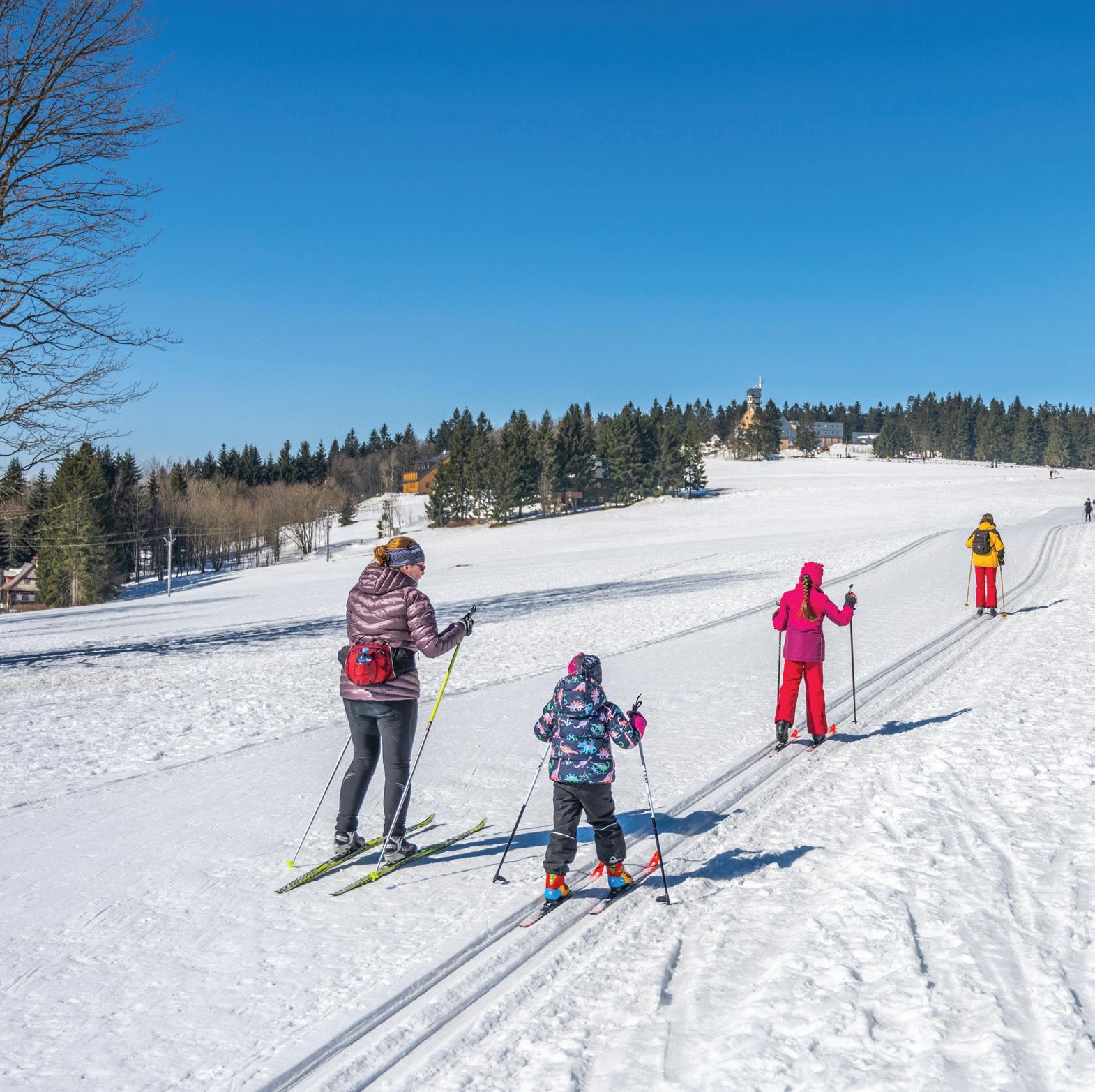
18 SEATTLE’S CHILD January/February 2023
A great way to see nature, work up an appetite and play in the snow
Fees: Each vehicle needs a Sno-Park Permit with a Special Groomed Trails Permit.
Rentals: No Lessons: No
Other activities: Tubing hill and designated snow play area.
Cabin Creek
Another great spot for beginners
Driving time from Seattle: 1 hour
Conditions: Posted online at kongsbergers.org
Fees: Every vehicle needs a Seasonal Sno-Park Permit with a Special Groomed Trails Permit. Rentals: No Lessons: No
Suncadia
Driving time from Seattle: 1.5 hours
Conditions: Call your destination Fees: None
Rentals: Available
Stevens Pass
Driving time from Seattle: 2 hours
Conditions: Steven’s Pass Weather Report
Rentals: Available
Lessons: Available
Other activities: Downhill skiing and snowboarding, snow play area.
Lake Wenatchee
Driving time from Seattle: 2.5 hours
Conditions: call Lake Wenatchee State Park, 509-763-3101
Fees: Each vehicle needs a Sno-Park Permit with a Special Groomed Trails Permit.

Rentals: No
Winter picnic? Yes, way!

off with delicious food.
Passing down a tradition
Along, long time ago I was a child. My childhood was different from a lot of others — there were only four of us in my family, we moved around a lot for my father’s work and my parents embraced cultural experiences.
It was not unusual for us to throw a party whose guests were only ourselves — yet we still cooked an elaborate feast and dressed up as if we were entertaining visiting dignitaries.
We visited museums, cathedrals, historic sites and ate all kinds of ethnic foods. Today this is not so unusual, but in the 60’s it was definitely not the norm. My childhood memories are almost exclusively about extraordinary experiences. One of those treasured memories is a picnic in the snow.
A preposterous idea sticks
I remember my mother thinking that my father was crazy for suggesting this preposterous idea. I remember a pine forest park, clearing 6 inches of snow from the picnic table and trying to keep warm sitting on its ice-cold benches. This picnic in the snow has remained family lore, passed down two generations now, to my children and my granddaughter. For our family, winter picnics are a recipe for great memories: start with loved ones, add a little challenge — something that pushes your comfort zone — sprinkle in images of togetherness and laughter, add a pinch of nature’s fragrances and textures and top it
The first winter picnic with my own children was part of our annual trek into the snowy woods in search of the elusive “perfect Christmas tree.” My husband was a bit of humbug and wasn’t excited about the adventure, but the kids were all in!
Expecting everyone to be cold and hungry, I packed some warm and tasty snacks. The food was never the main character in these ventures, but I brought thermoses of hot cider, bean soup and cookies and made sure what I offered was food my family loved. After tromping around in the thighhigh snow, falling, laughing and losing the feeling in our hands, we brushed off some old stumps for our impromptu table and seating and enjoyed our lunch. I remember it being delicious, but let’s be honest, doesn’t food always taste better outdoors? It’s about the food AND the adventure
Remember, when you plan a winter picnic, you are planning an experience and, if you are fortunate, stories that will live far into the future.
The first step is to pick your place. You don’t need to head to the mountains. Seattle has many wonderful parks, lots of them with tables and shelters. Seward Park is a great place for beginners and there’s a winter picnic bonus: many of the shelters have grills. Lincoln Park in West Seattle is another terrific option, with tables and shelters in the forest above and waterside grilling shelters in the lower park. So build a fire and cook up something fresh and hot. Even simple hotdogs on sticks and toasted marshmallows take on an exciting new
January/February 2023 SEATTLE’S CHILD 19
How one family turned a “preposterous” idea into a family tradition
NORDIC: COURTESY OF SHUTTERSTOCK CONTINUED ON PAGE 26
CONTINUED ON PAGE 24
by MARY YGLESIA
>
>
The Conconully Outhouse Races
by CLAIRE SHERIDAN
Looking for a new tradition to add to your family’s winter funscape? Consider this crazy event, which happens over MLK Day weekend each year: The Outhouse Races in Conconully, Washington.

First, make yourself a homemade outhouse — with three sides, a roof, and a 2x4 wooden push bar. Secure all that atop two skis. Get creative. Next, invite your kid to hop inside and sit on the requisite toilet seat. Wait for the race signal. Finally, propelled by the push-power of two other family members, glide that privy 100 yards to victory!
Or maybe just go for the fun of it. Because that’s what this beloved annual event is all about. The outhouse races have defined the tiny town of Conconully’s family-focused winter fun for more than 40 years. And, while there are other outhouse races that take place in snowy states from Alaska to North Carolina, local lore has it that Conconully is where this unusual sport was born.
Each January, the races draw more than 2,000 spectators from around the state. Some years, a third of the town (population 210) steps up to volunteer. Working together, the community sets up the courses, builds bonfires, makes trophies and announces the races.
Bundled and boisterous spectators cheer on dozens of wacky outhouse racers in 11 categories. There are specific races just for kids,
teens, and family teams. But the most coveted prize is bestowed before the race begins: The People’s Choice Award goes to the team with the best costumes and the most handsome potty. Themes are limited only by imagination; past outhouses flew down the course decorated as Star Wars ships, firehouses and school buses.
The kid (ages 7-12), teen (ages 13-17) and family competitions are pretty straightforward — competitors literally run in a straight line from start to finish. The X-TREME competition is a bit dicier; teams must navigate their outhouses through a hay-bale obstacle course. In the Bucket Race, pushers — who are “blinded” by wearing empty 5-gallon buckets over their heads — follow rider directions, trying (and often failing) to avoid hay bales and other teams.
Regardless of which race your family enters, it’s a guaranteed good time. Obviously those first across the finish line receive a trophy. However, the biggest prize may be the bragging rights that come from having flown down a race course pushing a potty — or, even more coveted, riding on the toilet seat within.
Conconully takes its outhouse races quite seriously. Folks there don’t let anything stand in the way of outdoor winter fun — not even a pandemic. At the height of the COVID-19 spread last year, the races continued on schedule, albeit in modified form. Commitment to protecting racers and watchers from the virus led the Conconully Town Council to move the 2021 race out of the town’s center. That year, races were held in a more open
campground resort. Modifications to the event — including social distancing measures like individual family campfires, as opposed to traditional communal bonfires — ensured the show could safely go on.
Officials expect a return to pre-COVID normalcy this year. Outhouses will once again fly through downtown Conconully. Still, if you go, plan on the safe side. Take regular COVID protections: bring masks, encourage the whole family to practice social distancing and wash hands regularly. Consider carrying an extra roll of toilet paper in your pocket — both in salute of the races and in memoriam of COVID-surge TP sell-outs. Not to mention that, with freezing temperatures, noses and tears of laughter are sure to flow as racers whiz by.
The origins of the Conconully Outhouse Races is unclear. Dena Byl, whose family resurrected the town’s Chamber of Commerce in the 1970s, said the event harkens back to the early ’80s and a simpler time, when people prioritized fun and frivolous connections with their neighbors. The races are the town’s version of good old-fashioned, morale-boosting, community silliness — akin to other holiday events like three-legged races on the Fourth of July and Seattle’s own annual Seafair Milk Carton Derby on Green Lake.
Whether you go to compete or just to visit for a weekend of bathroom spectating, the Conconully Outhouse Races are a great way to spend a winter weekend outdoors. Spend a weekend in a simpler time, disconnected from screens, connected as a family within this event’s charming absurdity. SC
It’s a trek, but these potties are worth the trip
ADVENTURES FURTHER AFIELD
WINTER
OUTHOUSE RACES: COURTESY OF SHIZUKA MINAMI 20 SEATTLE’S CHILD January/February 2023
Outhouse Racing 101
Race day: January 14, 2023










How to enter: Teams register on race day at Conconully Community Hall. $35 per entry.
Competition rules: Learn about outhouse entry specifications and race rules at 3conconully.com/outhouse-races
Where to stay
Plan for at least one overnight in or near town and book early. Accommodation options include: Comstock Motel, Gibson’s North Fork Lodge, Liars Cove Resort, Shady Pines Resort, and Kozy Kabins & RV Park (888-502-2246).
Several area campgrounds have plowed spaces for self-contained RV/truck campers (power, but no water), including Carl Precht Memorial Park and Omak RV camping.
Other things to do in Conconully


Consider a tour through the tiny Conconully Museum or a snow walk, ice fishing or other winter recreation at nearby Conconully State Park.
Washington
State
Heirloom Birth Certificate
A portion of the proceeds from each birth certificate benefits the Children’s Trust Fund of Washington, administered by the Washington State Department of Children, Youth & Families Strengthening Families Program.
• This official birth certificate is personally signed by the Governor and State Registrar.



• Certificate is 8 1/2 x 11 and includes the name, date and place of birth, as well as the name and birthplace of the parent(s).
• Frameable keepsake.


• For each $45 purchase of an Heirloom Birth Certificate, $20 is tax deductible.
To find out more information on Children’s Trust and child abuse prevention in Washington State visit: www.dcyf.wa.gov/about/governmentcommunity/community-engagement or visit the Department of Health to order your own Heirloom Birth Certificate.
DCYF FS_0010 (09-19)



It’s so much more than a gift!
January/February 2023 SEATTLE’S CHILD 21
Go ice fishing
by MARCY STAMPER METHOW VALLEY NEWS
Fresh fish in winter! If you are looking for an outdoor adventure with kids that ends with a tasty indoor meal, ice fishing has you covered.
Washington is home to numerous tried and true ice fishing spots where kids can experience the thrill of the catch. Most of those great spots are in eastern Washington, due to colder temperatures, higher snow levels and an abundance of lakes. So if ice fishing is on your winter “do something different” list, plan ahead for a weekend away or a special mid-winter break adventure of several days.
Ice fishing is a wonderful “starter course” for kids (or anyone) interested in fishing. You don’t need to learn to cast in order to lure fish through an ice hole. Equally important, many people find cold-water fish less “fishy” tasting than warmer water fish, making them more appealing to young tastebuds.

Compared with summer fishing, the equipment and technique needed for ice
fishing are straightforward and inexpensive. You don’t need a boat. You don’t need high-end fishing gear. And, unlike a lot of summer fishing, you do get to keep what you catch. With the right equipment and not a lot of experience, your family can access a world of yellow perch, rainbow trout and kokanee in a frozen river or lake.
The process
First, drill a hole with an auger. Drilling through thick ice, even with a simple handcranked auger, is surprisingly quick. Most ice fishers make a hole six to eight inches in diameter. That’s generally big enough to see the action above and below the surface and bring up fish easily without compromising the ice.
Next, scoop out the snow and ice to make the hole uniform.
Then, tie live bait and/or a shiny lure onto your fishing line. Parents may need to help young fishers with this task.
Finally, drop the line into the hole and wait. Bring a bucket to turn over as a seat while fishing — and then to carry home the catch at the end of the day.
Feel a tug on the line? Pull that fish straight up through the hole instead of reeling it in.
What you’ll need
Ice fishing is not an expensive activity. In fact, you should be able to gear up your family for less than $100. Here’s the must-have list.
3A short pole (even a stick and some fishing line will work)
3An ice auger (to drill a hole) $60 for hand-powered at Cabella, significantly more for battery powered
3A scoop (to keep the hole free of snow and slush)
3A 5-gallon bucket (to support the rod, to sit on, and to carry your catch; a lawn chair also works), $5 at Home Depot or other hardware store
3Live bait, a shiny lure or artificial maggots
3A fishing license from the Washington Department of Fish and Wildlife. Call (360) 902-2464 or go to 3fishhunt.dfw.wa.gov.
The limit on most species is five a day. $11.35 for one day per person age 15 and older. Kids 14 and younger do not need a license.
Ice Safety
These three things are critical to a safe ice-fishing adventure.
3Always check ice thickness. 4 to 6
There’s a hole lotta fun waiting on Washington’s frozen lakes
22 SEATTLE’S CHILD January/February 2023 WINTER ADVENTURES FURTHER AFIELD ICE FISHING: COURTESY OF SHUTTERSTOCK
inches is generally considered safe. Keep in mind that ice is not uniform – it may be a foot thick in one area but only a few inches nearby.
3Look for new, clear ice as it tends to be the most solid. Remember that snow insulates the ice, meaning it will freeze more slowly. Still, 4-6 inches is needed for safety.
3Carry ice-rescue claws to climb out if you fall through the ice. Google: DIY Ice Claw Instructable.
Where to go
Numerous ice-fishing aficionados point to Patterson Lake, located just west of the idyllic town of Winthrop and about four hours from Seattle, as a go-to spot. It’s a great spot for yellow perch, rainbow trout, kokanee salmon and bass.
A tad closer to home, Fish Lake lies about 15 minutes outside Leavenworth, just over a 2-hour drive from Seattle. Yellow perch is the main find here, although the occasional rainbow trout leaps onto the line.
For more information on ice fishing and other great locations, check out the list of fishing lakes in Washington on the Washington Departmet of Fish and Wildlife website. SC

Marcy Stamper is a reporter for the Methow Valley News. The full version of this article is available online at 3methowvalleynews.com.


15201 Meridian Avenue N, Shoreline 98133 | 206-364-2650 | www.evergreenschool.org SUMMERTIME FUN! June 26 –August 18 Preschool—8th grade Learning & Enrichment Outdoor Education Performing Arts Fine Arts Sports Day Camps Find registration information online: www.evergreenschool.org January/February 2023 SEATTLE’S CHILD 23
ANIMAL TRACKING
of mammal structure, try to reconstruct the body of the creature from what you’ve collected.

3Next, see if you can identify the animal.




3As you consider, ask questions: Did the animal die from predation? Was it scavenged? How many pieces did you find and how old are they?
You can try to figure out bird species based on color, pattern and size of found feathers. Seattle Audubon’s Birds of Washington State site is a great resource. Which part of the bird did it come from? What likely happened to the bird? For example, a pile of feathers on a log may indicate a kill by a hawk. Hawks are known to pluck breast feathers from their prey.
Track tree sign
Beavers are the only critter to chew through large tree stems. Deer and elk rub saplings. Woodpeckers leave distinctive holes in trees for feeding and nesting. Bears can strip the cambium off small-diameter saplings in wet forests. Tree sign is among the best signs of wildlife in a region because it lasts a long time.
Wildlife can be elusive, but animals are not invisible when we are alert to the clues they leave to help us understand their world. SC
Ken Bevis is a Stewardship Wildlife Biologist for Washington Department of Natural Resources and writes frequently about all things wild. A version of this article appeared originally in Washington State University’s Forest Stewardship Notes.
NORDIC SKIING
Lessons: No

Other activities: Tubing hill and designated snow play area.

Leavenworth Ski Hill
Driving time from Seattle: 2.5 hours
Conditions: skileavenworth.com/conditions Rentals: The ski hill itself does not provide them, but there are four different places in Leavenworth to rent cross-country skis.
Lessons: One-hour group lessons for ages 12 and older are $32 for regular cross-country or $37 for skate-skiing. A private 1-hour lesson for any age is $57, but the price goes down if you add another one or two to the group.



Other activities: Downhill skiing and snowboarding, tubing, fat biking.
White Pass
Driving time from Seattle: 3 hours
Conditions: skiwhitepass.com/snow-report Rentals: Available
Lessons: Group and private lessons available. Call 509-672-3101 (option 6) to reserve.
Other activities: Downhill skiing and snowboarding, tubing, fat biking. SC

6410 23rd Ave NE Tulalip, WA 98271 360-716-2600 HibulbCulturalCenter.org Discover the
and
of the Tulalip
haʔɬ adsɬčil welcome FREE ADMISSION The first Thursday of every month! to a kid-friendly city F l us @ SeattlesChild @ SeattlesChildMag 24 SEATTLE’S CHILD January/February 2023
history
culture
Tribes
CONTINUED FROM PAGE 15
CONTINUED FROM PAGE 19
How to dig for razor clams





Look for a “clam show”—a telltale dimple in the sand that indicates a submerged razor clam. These form when a clam withdraws its neck or starts to dig, leaving a small hole on the sand’s surface. Stomping around or smacking your shovel on the sand can provoke a clam to show and spurt water. Larger dimples usually indicate bigger clams. Once you’ve settled on a clam show, face the ocean to keep an eye out for sneaker waves while you dig. There are two methods.
Clam gun method. Center the tube of the clam gun over the dimple. Slant the top of your tube back slightly toward you. Next, use a gentle twisting motion to work the tube into the sand until it is about 6 to 10 inches below the surface. Place your thumb over the air vent, bend your knees, then pull up on the handles. There — you’ve just brought up a core of sand. Is the clam in there? You have to check—it may be concealed within the sand. If the clam does not come up in the core of sand, reach into the hole for it.
Clam shovel method. Insert the blade vertically into the sand about 4 inches from the clam show on its seaward side. Face the blade away from the clam and start removing sand by lifting and twisting the shovel. You’re not digging up the clam, but instead digging a hole right next to the clam, eventually exposing it. Then, you can reach down and remove the clam by grasping the neck or shell. Dig quickly to catch the clam before it burrows away, but take care to not hit the clam with the shovel—this could shatter its porcelain-like shell.
How to prepare razor clams
Keep your clam haul in a bucket with a little seawater until you get to your campfire or kitchen. Wash each clam under running water to remove sand, then put water to boil. One at a time, use tongs to submerge the clam in the simmering water until the shell pops open, then quickly transfer it to a bowl of iced water to cool. At this point you’ll be able to coax the clams from their shells easily.
The last step before cooking is to separate the white meat of the clam from any dark parts. Slice off the dark tip of the siphon, then cut the clam open lengthwise along the zipper from foot to both tubes of the siphon, opening it flat and cutting off the tan gills and removing the stomach and guts. What you’re left with are pieces of sweet clam meat, a Northwest delicacy.
One of the tastiest ways to eat them is panko-coated, fried, topped with a squeeze of lemon and dipped in tartar. Or sauté them in a hot pan with butter, minced garlic, and a pinch of crushed red pepper. Chop up the rest and use the sweet, tender meat for yummy clam chowder. Take care not to overcook razor clams, or the texture will change from buttery to chewy. SC

Scan here with your phone to visit our online Camps Directory. seattleschild.com/camps







Look for our guide to summer camps and classes coming in February!
Get ready for this year’s
January/February 2023 SEATTLE’S CHILD 25
CLAM DIGGING CONTINUED FROM PAGE 17
RAZOR
WINTER PICNICS
Your guide to a kid-friendly city the go!
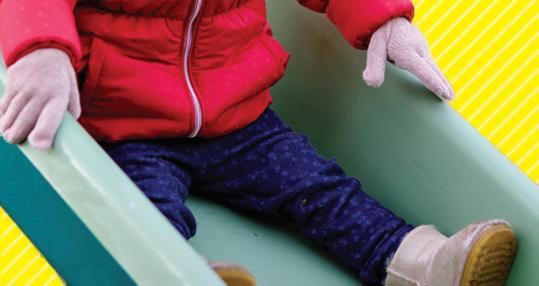


» seattleschild.com

taste in winter.
If you have a propane camping stove, perfect! Your options for a hot-food winter picnic just grew. Stay in the city or head to the mountains that surround the Puget Sound.
Foods to warm them up
There is some art to picnicking in winter — sandwiches and a cooler of sodas just won’t cut it. But you do want to keep your menu simple and bring food that is hearty and warming. Our family has found these foods to be great winter picnic partners:
3Soups or stews kept hot in a thermos or heated over a fire
3Wraps, in foil to be warmed over a fire
3Grilled sandwiches kept warm in an insulated bag
3Simple loaves of bread, cheese, olives
3Warm beverages like hot cider or cocoa

3Always a sweet treat at the end
Kill two birds with one winter picnic
With the right gear, tires and fortitude, you can expand your winter repast with a task or challenge. When my kids were young we loved to head to Verlot Ranger Station (now the Verlot Public Service Center) in Granite Falls where we’d purchase a tree tag. From there we’d head up a forest road until we found just the right place to park, then walk, snowshoe or just posthole in the snow until we felt tired and hungry. At that point I’d bring out the goodies. Along the way we’d keep our eyes peeled and collect greenery that would bring the outdoors into our house in winter.
Invite kids to look deeply


Winter picnics will become part of your family’s storyboard. So invite everyone in your family to collect the details of an event:
3Make a point of noticing bird calls and any animal tracks.
3Ask kids to consider what the air smells like.
3Present questions for them to ponder: Is the light reflecting off the water or the snow?
3If someone does something brave or funny or goofs up, invite each child to write their version of the story. It will all become part of the lore they pass on.
Case in point for the latter suggestion: I know of a woman who cut down a tree and after dragging it for close to an hour back to the car discovered it was way too large to get in or even on top of the car. Some major surgery was required to bring that big-game trophy home! Having seen a lot of green in a lot of forests, I am certain that tree looked much smaller out in the woods. And now it’s part of her family’s storyboard, a part her children love to retell year after year.
Safety first
Picnicing in winter is fun, invigorating, sometimes frustrating, but always an adventure. Keep your adventure safe:
3Have a plan in case your car gets stuck in snow.
3Tell someone not on your trip where you are going.

3Be prepared for the weather.
3Dress in layers, including waterproof outer
26 SEATTLE’S CHILD January/February 2023
Find your next family adventure on our website
CONTINUED FROM PAGE 19 CONTINUED ON PAGE 27 >
LUGING, SLEDDING AND TUBING
CONTINUED FROM PAGE 17
is an unpredictable winter treat – growing up in Ballard, I hold onto only a few significant memories of the city as a powdery playground. December 1996 was one of the best, all the kids in our neighborhood dug sleds out from the depths of our garages and trudged off each morning in search of the best slopes.
Sledding in the city is one of the most accessible and least expensive ways to make the most of a snow day. Your sled can be store-bought or improvised with a piece of plastic (maybe the lid of a storage bin) or cardboard. A metal baking sheet also works well for little ones.
In-city precautions
The sight of a steep slope anywhere can excite, but don’t let the prospect of flying downhill like a Calvin and Hobbes comic strip outweigh the safety of the situation. These tips will help keep injuries at bay:
3Avoid streets with cars parked along the sides and intersections that might still have vehicle traffic through them.
3If you find a spot in a park or out in the woods, walk the hill first. Look for hidden obstacles and make sure there is enough space between trees to navigate safely.
3Sleds are not known for their precision handling.
3Riders need to have enough room to safely bail out if they start heading toward obstacles.
3Tube with your youngest riders in your lap if a hill looks too daunting.
3Dress for the wet and cold and bring extra gloves for frozen fingers (both little AND big).
Remember, if you sled down you have walk back up — if you want to slide again. All that hiking up and flying down will build up an appetite. Bring snacks and a big thermos of your favorite warm beverage.
A hint from a former city kid
When those flakes do fall in the city, and the streets shut down as the snow piles up, the best spot we found back in 1996 was the top of Lower Woodland Park, just over the footbridges from the zoo. With the right sled, and enough snow on the ground, you can make it all the way down to the tennis courts. SC
WINTER PICNICS
CONTINUED FROM PAGE 26
layers and footwear, gloves and hats.
3Keep extra clothes and blankets in your car and extra socks for wet feet.
3Have a fully charged cellphone with you.
3Along with delicious food, carry a daypack with other hiking essentials: a navigation tool, extra water, extra socks or clothing, a first aid kit, a knife, matches or other firestarter, a light emergency bivy, headlamp and sunscreen (yes, even in winter).
Try something new and different this year. Plan a winter picnic and if your kids grumble and complain, just tell them “We’re creating forever memories! You’re welcome!” SC
Home of the BrainDance
Joyful self-expression and transformative learning for all ages, babies through adults! We focus on creativity, collaboration, and developing mindbody connections. Students learn and grow in an environment where personal uniqueness is celebrated.


Classes
Nurturing Baby Caregiver-Toddler Caregiver-Child Dance & Art Creative Dance Modern Ballet Jazz Hip Hop Online Adaptive BrainDance Adult Classes, too!
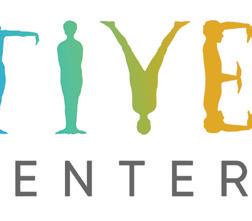
Enroll Now for Winter/Spring! creativedance.org

Hover your phone camera over this code to visit our website.

GRADES K-5 • SCHOLARSHIPS & SLIDING SCALE AVAILABLE • SAFETY FIRST! TILTH ALLIANCE’S REGISTER ONLINE: TILTHALLIANCE.ORG
FARM & GARDEN YOUTH PROGRAMS
January/February 2023 SEATTLE’S CHILD 27
Your guide to getting t and ab t



Stay active this season with indoor and outdoor activities!
Our special Inside/Out Section offers opportunities for winter gardening, a visit to the museum, art classes and so much more to keep your child engaged all winter long.




Chess4Life
Ages 5-15 13219 NE 20th St., Suite #203, Bellevue 98005 425-283-0549 kids@chess4life.com chess4life.com





Chess classes and camps your child will love! Chess4Life teaches beginners through advanced players valuable chess skills while encouraging a growth mindset. Your child can start gaining the proven cognitive benefits of chess today!
Creative Dance Center


All Ages 12577 Densmore Ave. N, Seattle 98133 206-363-7281 info@creativedance.org creativedance.org
The Creative Dance Center nurtures creativity and learning through joyful, meaningful dance
Romp newsletter delivers timely ideas for family-friendly local events and outings to explore. 28 SEATTLE’S CHILD January/February 2023
SCAN TO SUBSCRIBE Our
experiences. Using innovative teaching methods to unite body and mind, we provide an environment where people of all ages communicate, collaborate and create using the art form of dance. Classes for ages Newborn-5, children, teens, and adults.
Crossroads Bellevue
All Ages 15600 NE 8th St., Bellevue 98008 425-644-1111 info@crossroadsbellevue.com crossroadsbellevue.com

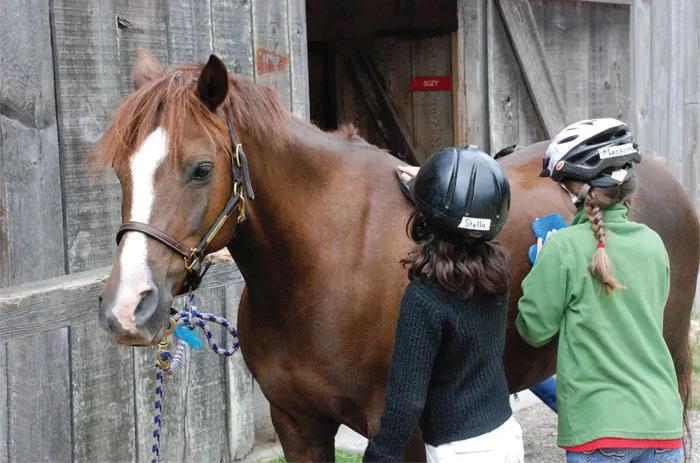



Crossroads Bellevue is a oneof-a-kind shopping, dining, and entertainment destination with year-round fun for the whole family including: unique shops, 30 international restaurants, live music every weekend, a farmers market (June through September), an 8-screen cinema, a rock climbing gym, art classes, and much more. Our Public Market offers two dozen locally owned ethnic eateries. Enjoy fast, affordable food in a family-friendly atmosphere.
Gage Academy of Art
Ages 7-18 1501 10th Ave. E, Seattle 98102 206-323-4243 info@gageacademy.org gageacademy.org/ youth-programs
At Gage Academy of Art, we strive to ensure children and teens have a fun, safe and creative learning environment throughout the year. With our roster of top-notch youth instructors, we offer both in-person and online classes to fit each family’s needs. From traditional painting and drawing to digital storytelling and character creation, each child will have the opportunity to thrive while learning creative skills at Gage Academy.
Girls Rock Math
Grades 1-6
3201 E. Republican Street, #7, Seattle 98112 206-408-8078 camp@girlsrockmath.org girlsrockmath.org
Girls Rock Math is an arts-based math camp focused on empowering girls in STEAM subjects. Our hands-on themes capture imagination, ignite deeper mathematical thinking and help campers feel confident in their capabilities. As part of a community where “Girl Power” rules, our campers develop leadership skills, make friends, take on challenges and learn together in a meaningful way. With so many curricular themes
Camp
Red
Counselors 12 and over
• Lessons • Leasing • Sales Jamie Smith – Trainer/Owner (425)
Summer Day
An Equestrian Training Center in the heart of Sammamish Summer Horse Camp Weekly Sessions June, July & August Ages 6 to 12
Training
466-3800 redgatefarmdaycamp.com
in
redgatefarmdaycamp.com Training • Lessons • Leasing • Sales Jamie Smith – Trainer/Owner redgatefarmtraining@gmail.com 425-466-3800 Ages 6 to 12 Counselors 12 and over
January/February 2023 SEATTLE’S CHILD 29
Gate Farm Summer Day Camp An Equestrian Training Center
the heart of Sammamish, Washington
Summer Horse Camp Weekly Sessions June, July & August
to choose from, we truly have something for everyone.




Hibulb Cultural Center & Natural History Preserve
All Ages 6410 23rd Ave. NE, Tulalip 98271 360-716-2600 info@hibulbculturalcenter.org hibulbculturalcenter.org
The Hibulb Cultural Center and Natural History Preserve is a place where visitors can learn about the cultural values and history of the Tulalip Tribes. Our exhibits and interactive displays will give you a historic perspective of the connectedness of the tribes and bands that make up the Tulalip Tribes. Celebrate traditional, usual and accustomed territories of the Tulalip Tribes to serve as a constant reminder of the Tribe’s historic connection to the land. Guided tours, interactive demonstrations, group rate and private rentals are available.
Stroum Jewish Community Center
Grades PreK-10 3801 East Mercer Way, Mercer Island 98040 info@sjcc.org sjcc.org

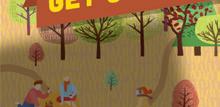


















From summer camp to enrichment classes, and everything in between, the Stroum Jewish Community Center’s J Kids Program has something for kids at all stages, during every season of the year. J Kids includes our J Camps (including our popular Summer J Camp and School’s Out J Camp), Kidstown After-School Care program, After-School Enrichment Classes (K-5th grade), Early Childhood Enrichment Classes (ages 3-4), group swim lessons (ages 3-12), youth sports leagues (like Dinky Dunkers), and special event programs. Everyone is welcome!

Oxbow Farm & Conservation Center



All Ages 10819 Carnation-Duvall Road NE, Carnation 98014 425-788-1134 meganh@oxbow.org oxbow.org
Oxbow Farm & Conservation Center is a nonprofit organization located on 240 acres of forest

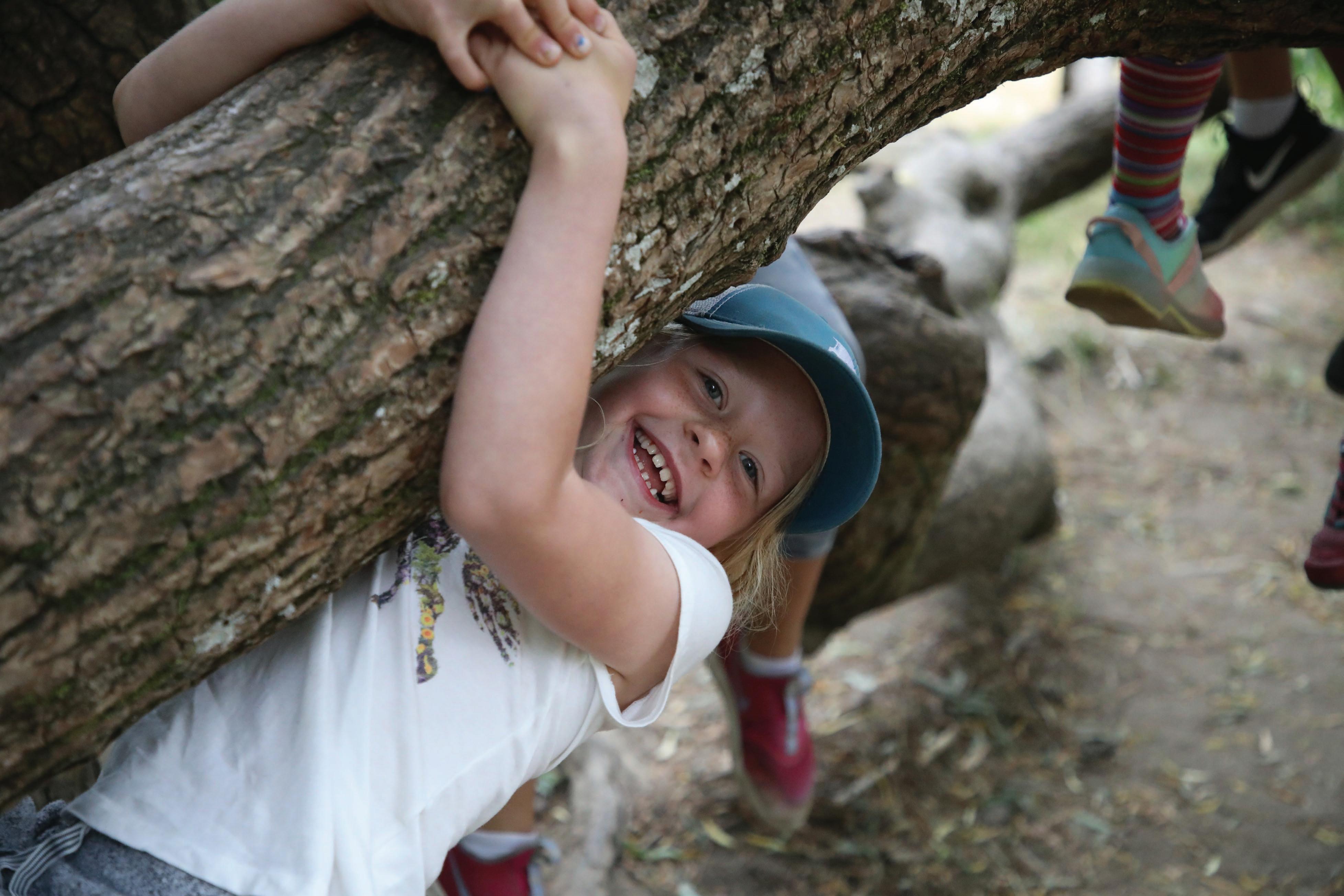
SUMMER CAMPS SEATTLE & EASTSIDE LOCATIONS FOR AGES 6 - 18 DAY, OVERNIGHT-and-EXPEDITIONS wildernessawareness.org for just a year! Give yourself or a friend the gift of the magazine and all of our guides! FUN MAIL? HOW ABOUT SOME Get deliv ed $12 seattleschild.com/subscribe Y r g deto intheP gtSo ndarea CAMPSANDCLASSES Newcampsandclassesaddeddaily: SeattlesChild 2022 FREE 30 SEATTLE’S CHILD January/February 2023
and farmland, bordering the Snoqualmie River in Carnation.
Oxbow researches and practices sustainable farming methods, grows food and native plants, and educates people of all ages about agriculture and the environment.
Red Gate Farm
Ages 6-12 23836 SE 24th St., Sammamish 98075 425-466-3800 redgatefarmtraining@gmail.com redgatefarmdaycamp.com


Build self-confidence while enjoying the pleasures of riding and developing a friendship with your camp horse. Campers will be assigned one horse with another camper that will be theirs for the whole week. They will learn everything about horse care including basic grooming, saddling and even arts, crafts and games. On the last day of every session, campers demonstrate their new riding skills with a horse show.
Tilth Alliance
Ages 1-15 5513 S Cloverdale St., Seattle 98118 4649 Sunnyside Ave. N, Seattle 98103 206-633-0451 info@tilthalliance.org tilthalliance.org

Dig into the worlds of the farm, garden and kitchen. Students will discover where food comes from, care for crops and engage in outdoor science, art and play at our after-school programs and summer camps. Programs are available in Wallingford and Rainier Beach.

Wilderness Awareness School
Ages 6-18 Programs located in Carnation, Duvall, Issaquah, Kenmore & Seattle 425-788-1301 wasnet@wildernessawareness.org wildernessawareness.org/ youth-programs/
For 40 years, Wilderness Awareness School students have been discovering the wonders of nature, exploring the outdoors, and building friendships. Campers work together, gaining awareness and experiential knowledge of plants, animals, animal tracks, birds, and survival skills. Storytelling and engaging activities make learning fun and nurture students’ connection to the earth.
Wilderness Awareness School offers a variety of day camps, overnight camps, and teen expeditions during the summer, and once-a-month (Fridays and Saturdays) and once-a-week (Thursdays and Fridays) programs during the school year.
A one-of-a-kind shopping, dining, and entertainment destination! UNIQUE SHOPS • 3 0 INTERNATIONAL RESTAURANTS ROCK CLIMBING • ART CLASSES • WIGGLEWORKS KIDS AN 8-SCREEN CINEMA • 2 5 -CENT KIDS’ RIDES COMMUNITY EVENTS • AND MUCH MORE! 15600 NE 8TH ST · BELLEVUE · 425.644.1111 CROSSROADSBELLEVUE.COM
January/February 2023 SEATTLE’S CHILD 31
FAMILYFUN YOURPLACEFOR
sneak p k




















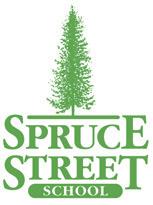













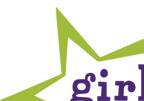










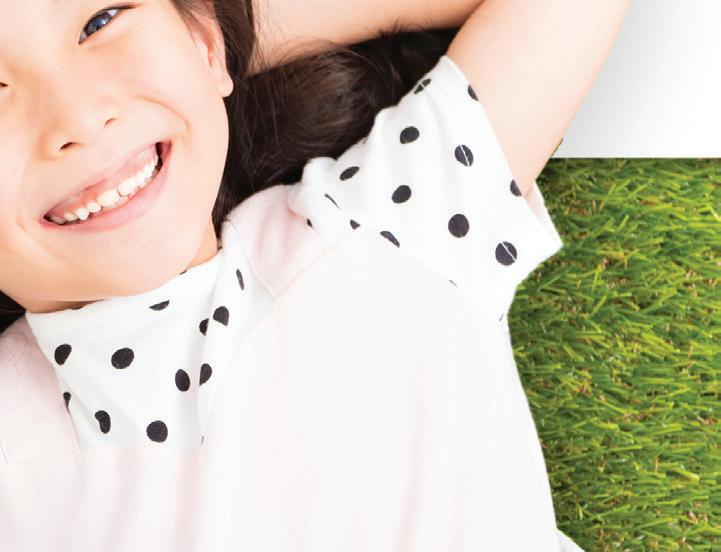


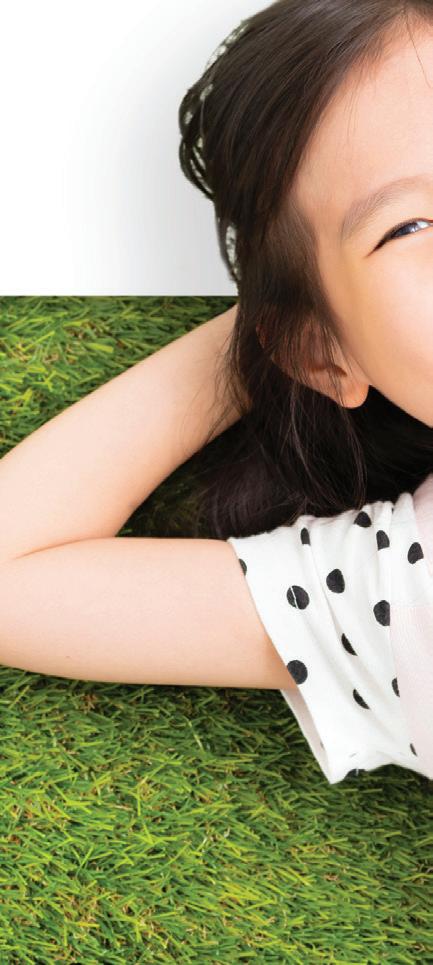








Get an early start
for summer!
Look for our 2023 SummerTime Guide coming in February! Scan here with your phone to visit our online Camps Directory. seattleschild.com/camps Check out these summer camps and classes—art, swimming, theater, academics, dance and so much more! Visit the Seattle’s Child Camp Directory for a description of programs and when to register.
planning

































































































































































































































